Introduction
Office furniture plays a pivotal role in shaping the productivity, comfort, and overall ambiance of a workplace. It’s more than just functional; it’s a key element in creating an environment that fosters efficiency and well-being. The right selection of office furniture can enhance employee performance, reduce physical strain, and convey a professional image to clients and visitors.
In today’s diverse and dynamic work environments, the variety of office furniture available caters to an extensive range of needs and preferences. From ergonomic chairs designed to prevent back pain to adjustable desks that promote a healthier posture, each piece of furniture contributes uniquely to the workplace’s functionality and aesthetic appeal. Understanding the different types of office furniture and their specific advantages is crucial for anyone looking to create an optimal workspace, whether in a home office or a corporate setting.
This guide will delve into the various types of office furniture, providing detailed insights into their features, benefits, and ideal use cases. Whether you are setting up a new office or revamping an existing one, this comprehensive overview will help you make informed decisions to create a productive and comfortable work environment.
1. Desks
Desks are the cornerstone of any office setup, providing a dedicated space for work, organization, and productivity. The right desk can significantly impact an individual’s efficiency and comfort. Here are the key types of desks that cater to various needs and preferences in the office environment:
1.1. Executive Desks

Executive desks are designed to make a statement. They are typically large, sturdy, and made from high-quality materials such as solid wood or premium laminates. These desks often feature intricate designs, ample surface space, and multiple storage options, including drawers and cabinets. Executive desks are ideal for high-level executives and managers who need a spacious and prestigious workspace that reflects their status and accommodates extensive paperwork and office equipment.
1.2. Standing Desks

Standing desks have gained popularity due to their health benefits. They allow users to alternate between sitting and standing positions, reducing the risks associated with prolonged sitting, such as back pain and poor posture. Standing desks come in various forms, including manually adjustable and electric models that offer effortless height adjustment. These desks are ideal for health-conscious workers and modern offices that prioritize employee well-being and flexibility.
1.3. Adjustable Desks

Adjustable desks, also known as sit-stand desks, provide the ultimate flexibility. They can be easily modified to suit the user’s preferred height for both sitting and standing positions. This adaptability makes them a great choice for shared workspaces and environments where multiple users might need to adjust the desk to their comfort level. Adjustable desks are particularly beneficial for ergonomic setups, promoting better posture and reducing strain on the body.
1.4. Corner and L-shaped Desks
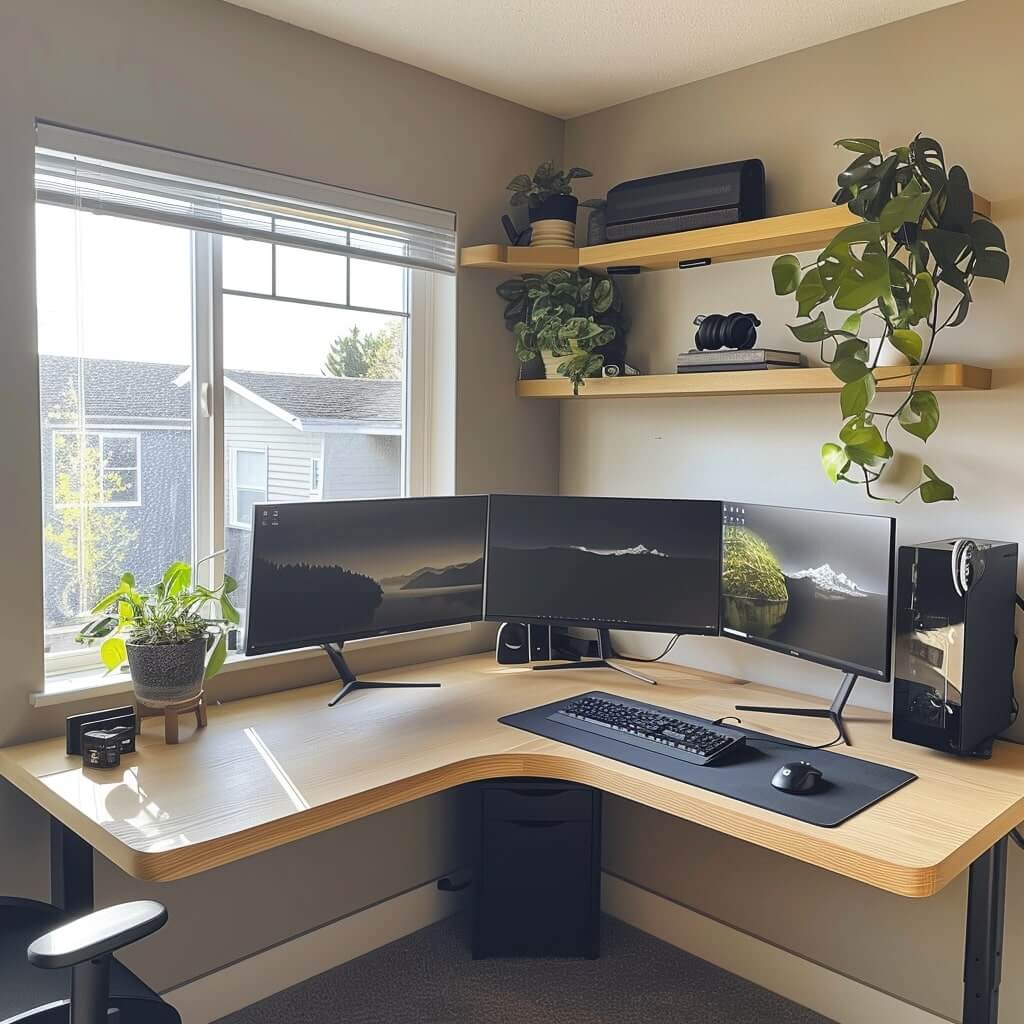
Corner and L-shaped desks are perfect for maximizing office space and providing ample workspace for multiple tasks. These desks fit snugly into corners, making them ideal for small offices or rooms where space is at a premium. They often feature expansive surfaces that can accommodate dual monitors, printers, and other office equipment, along with plenty of storage options. These desks are ideal for professionals who need to multitask and require a well-organized workspace.
1.5. Reception Desks
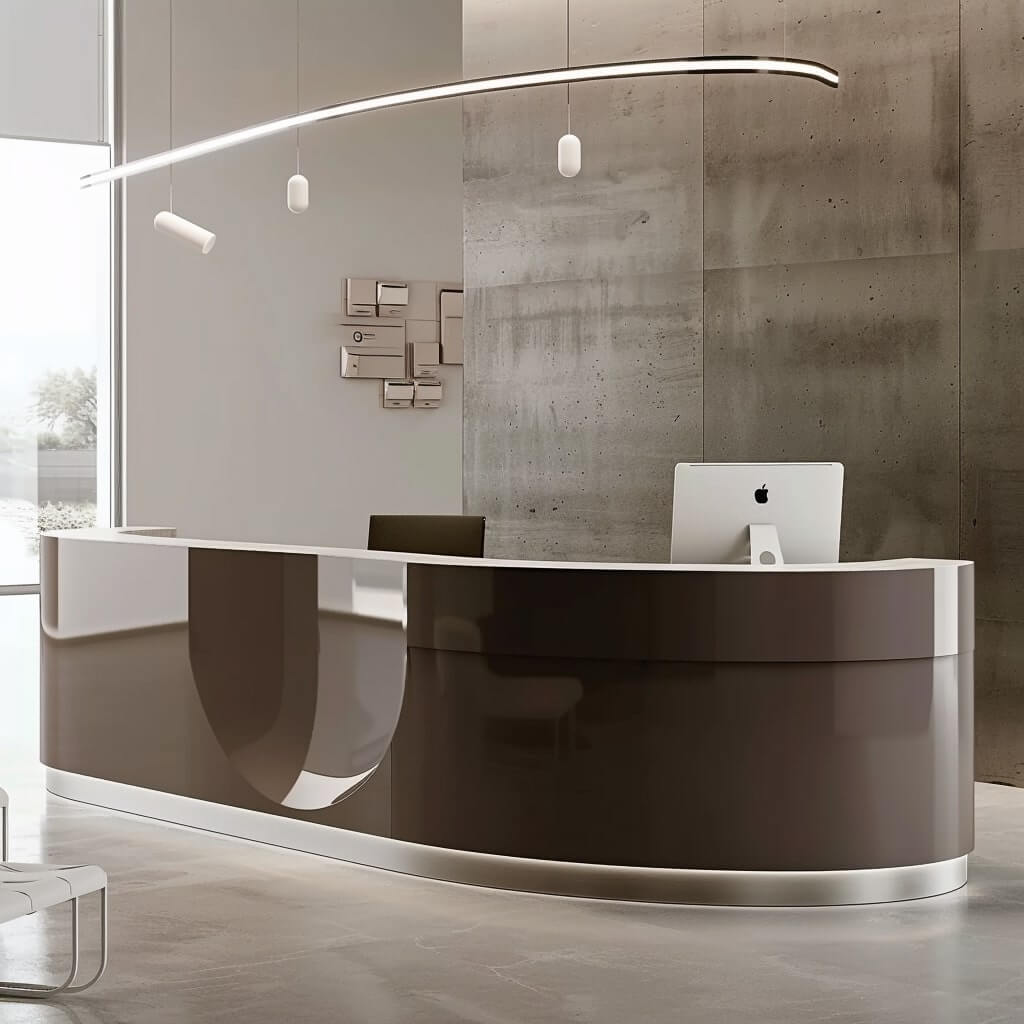
Reception desks are the first point of contact for visitors and clients, making them crucial for creating a positive first impression. These desks are typically designed with a welcoming and professional appearance, featuring ample surface space for computers, phones, and visitor sign-in materials. They often include built-in storage and organizational features to keep the reception area tidy and efficient. Reception desks are essential for front desks and reception areas, where they play a key role in managing visitor flow and presenting a polished image.
Choosing the right desk is essential for creating a functional and aesthetically pleasing workspace. Each type of desk offers unique benefits and features that cater to different work styles and office needs. Whether you prioritize luxury, health, flexibility, or space efficiency, there is a desk designed to meet your specific requirements.
2. Chairs
Office chairs are crucial for ensuring comfort, productivity, and overall health in the workplace. The right chair can significantly impact an employee’s well-being, reducing the risk of musculoskeletal problems and enhancing concentration. Here are the key types of office chairs, each designed to meet different needs and preferences:
2.1. Ergonomic Chairs

Ergonomic chairs are designed to provide maximum support and comfort, reducing the risk of back pain and other health issues associated with prolonged sitting. Key features include adjustable seat height, lumbar support, armrests, and a recline function. Ergonomic chairs are ideal for anyone who spends long hours at their desk, offering personalized adjustments to fit various body types and preferences.
2.2. Executive Chairs
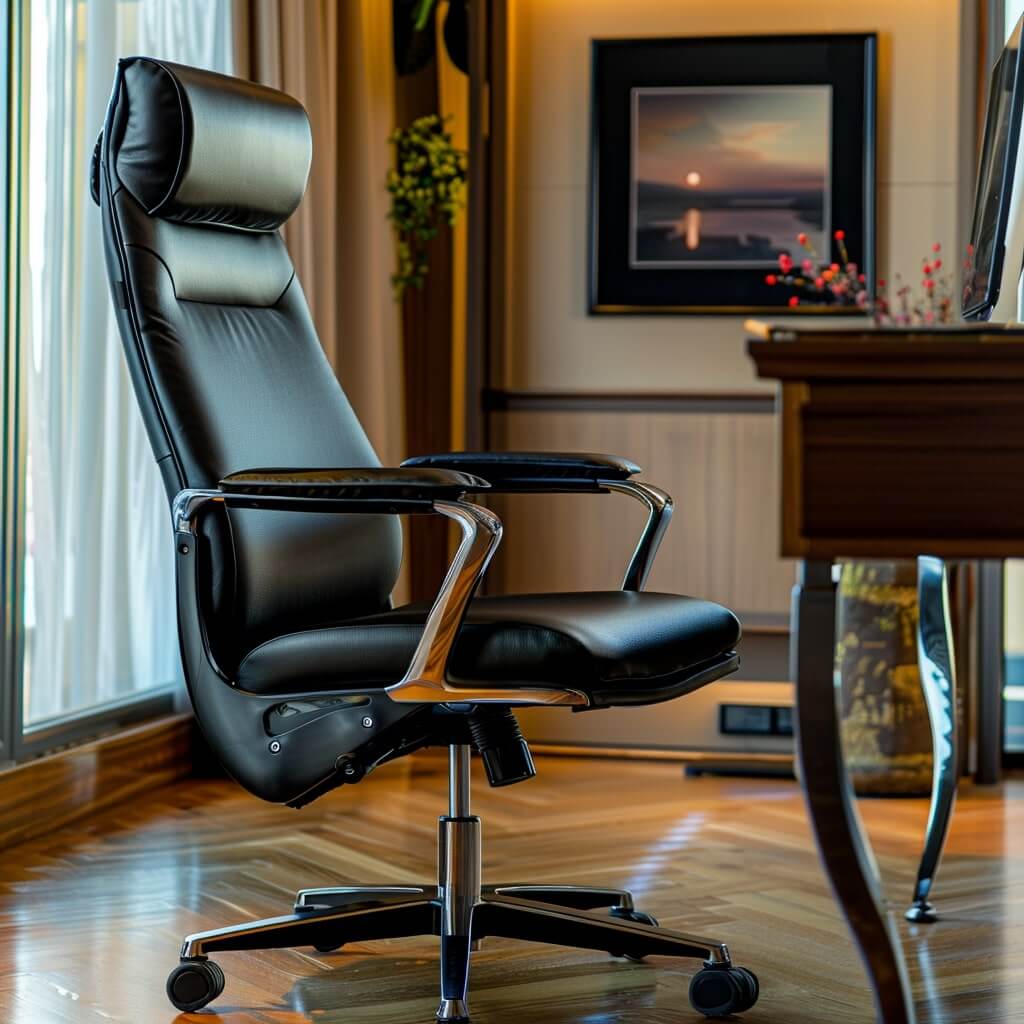
Executive chairs combine luxury and comfort, featuring high-quality materials such as leather or high-grade fabric, along with plush padding. These chairs often include high backs, cushioned armrests, and advanced tilt mechanisms for superior support. Executive chairs are ideal for high-level executives and managers who seek both style and comfort in their office seating.
2.3. Task Chairs

Task chairs are versatile and functional, designed for general office use. They offer a balance of comfort and support, with adjustable features like seat height and backrest angle to accommodate different tasks and users. Task chairs are ideal for a wide range of office activities, from typing and reading to meeting with colleagues, making them a staple in most workspaces.
2.4. Conference Room Chairs

Conference room chairs are specifically designed for meeting rooms and boardrooms, providing comfort and style for extended discussions and presentations. These chairs typically feature cushioned seats, supportive backs, and sometimes wheels for easy mobility. Conference room chairs are ideal for ensuring participants remain comfortable and focused during long meetings.
2.5. Guest Chairs

Guest chairs are intended for visitors and clients, providing a comfortable seating option that complements the office decor. These chairs often prioritize aesthetics and simplicity, featuring cushioned seats and backs without extensive adjustability. Guest chairs are ideal for reception areas, waiting rooms, and visitor seating in executive offices, enhancing the overall professional appearance of the space.
Choosing the right office chair is essential for maintaining a productive and healthy work environment. Each type of chair offers unique benefits tailored to specific needs, from ergonomic support to executive luxury. By selecting chairs that meet the diverse requirements of their users, offices can ensure comfort, efficiency, and a positive work atmosphere.
3. Storage Solutions
Efficient storage solutions are vital for maintaining an organized and productive office environment. They help keep workspaces tidy, ensure easy access to necessary materials, and contribute to the overall aesthetic appeal of the office. Here are the key types of storage solutions commonly used in offices:
3.1. Filing Cabinets

Filing cabinets are essential for organizing and storing documents securely. They come in various sizes and configurations, including vertical and lateral models. Vertical filing cabinets are narrow and tall, making them suitable for tight spaces, while lateral filing cabinets are wider and shorter, providing easy access to files. Key features often include lockable drawers for added security and smooth gliding mechanisms for ease of use. Filing cabinets are ideal for offices that require efficient document storage and quick retrieval.
3.2. Bookcases and Shelving Units
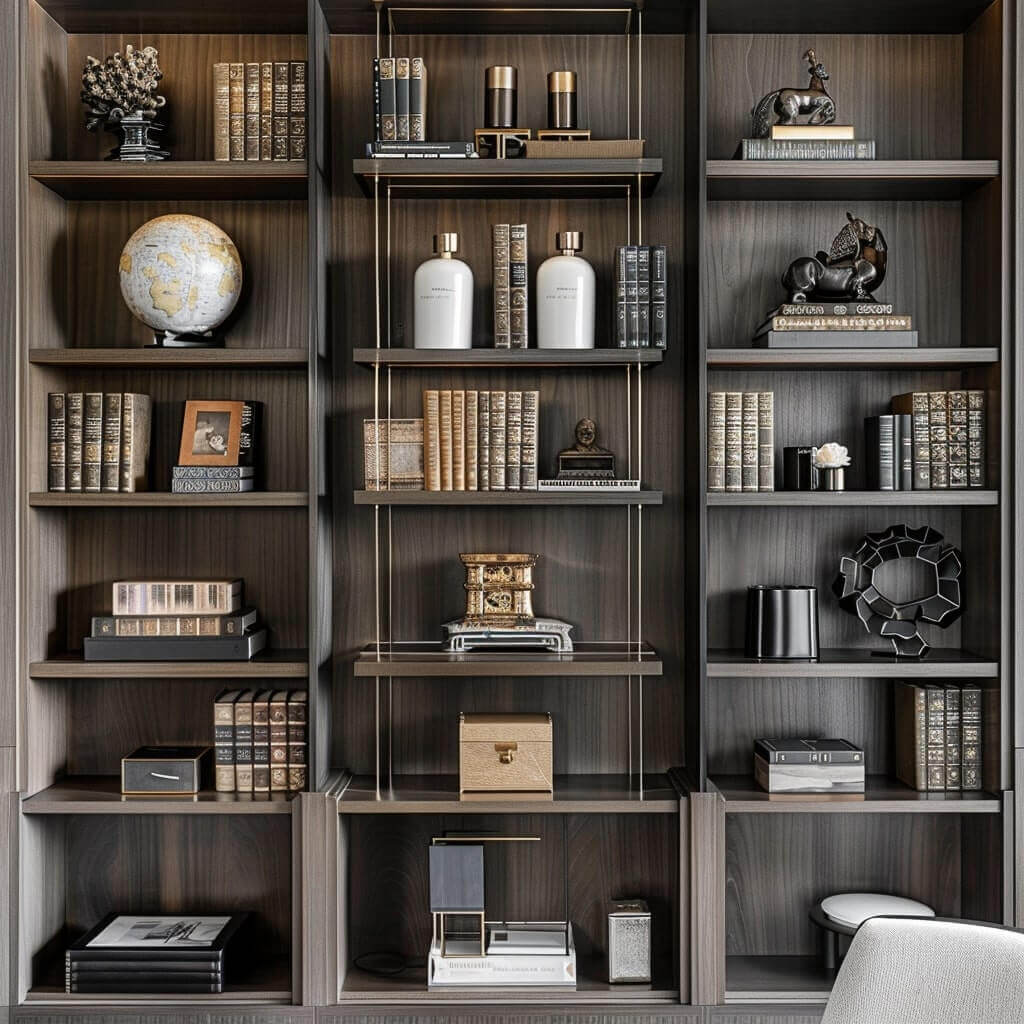
Bookcases and shelving units offer versatile storage for books, binders, decorative items, and office supplies. They come in various sizes, materials, and designs, allowing for customization to match the office decor. Open shelving units provide easy access and display, while closed units with doors offer a cleaner look and dust protection. Bookcases and shelving units are ideal for creating a well-organized and visually appealing office space.
3.3. Storage Cabinets
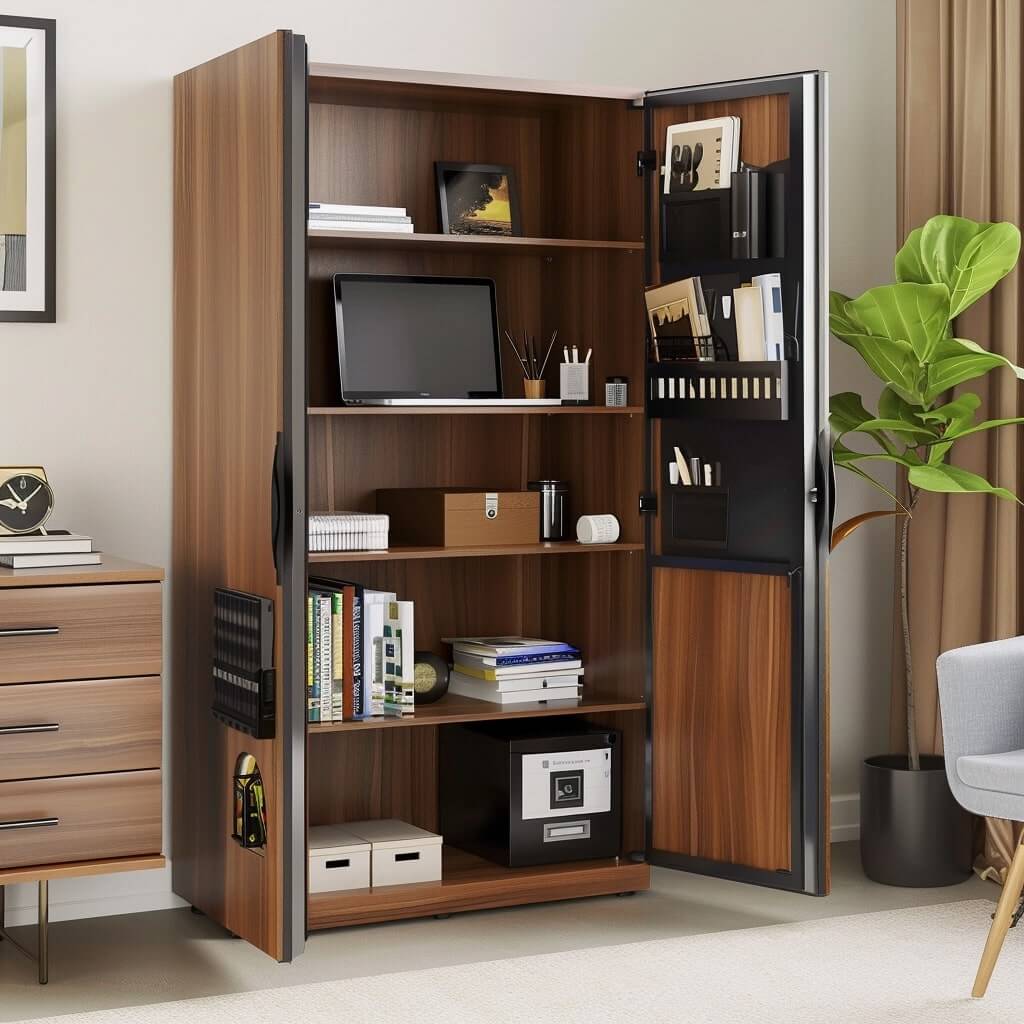
Storage cabinets provide a flexible solution for storing a wide range of office items, from supplies and equipment to personal belongings. These cabinets come in different styles, including metal, wood, and laminate, and may feature adjustable shelves, drawers, and lockable doors. Storage cabinets are ideal for offices needing versatile and secure storage options to keep the workspace clutter-free and organized.
3.4. Mobile Pedestals
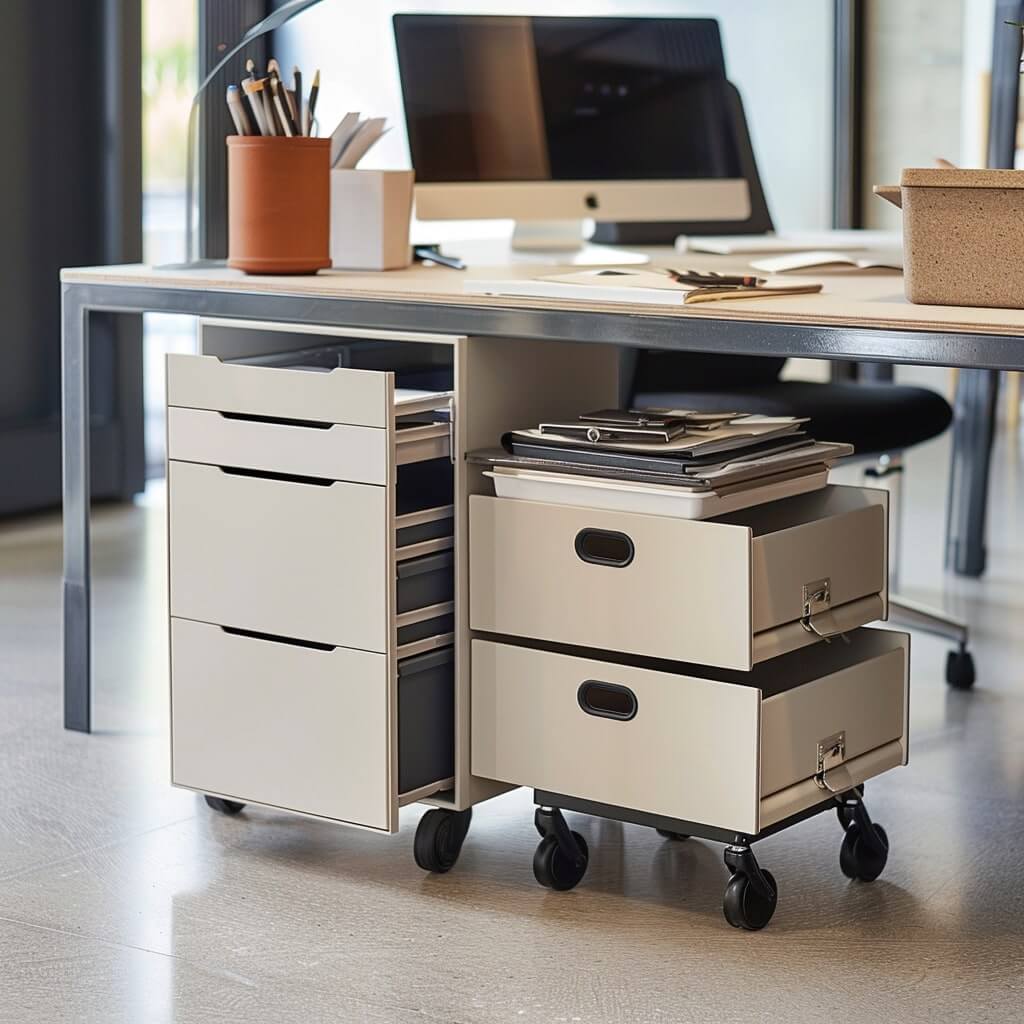
Mobile pedestals are compact, portable storage units designed to fit under desks or workstations. They typically feature multiple drawers for storing documents, office supplies, and personal items. The mobility of these pedestals, thanks to their caster wheels, allows for easy repositioning and flexibility in office layouts. Mobile pedestals are ideal for providing convenient, accessible storage without taking up much floor space.
Choosing the right storage solutions is crucial for maintaining an orderly and efficient office. Each type of storage unit offers specific advantages tailored to different organizational needs, from secure document filing to versatile supply storage. By incorporating appropriate storage solutions, offices can enhance functionality, improve aesthetics, and create a more productive work environment.
4. Conference Room Furniture
The conference room is a central hub for meetings, brainstorming sessions, and important discussions. The furniture in this space plays a critical role in ensuring comfort, promoting collaboration, and creating a professional atmosphere. Here are the key types of conference room furniture that cater to various needs and preferences:
4.1. Conference Tables

Conference tables are the focal point of any meeting room. They come in various shapes, sizes, and materials, allowing for customization to fit the room’s dimensions and the organization’s style. Common shapes include rectangular, oval, and boat-shaped tables, each offering different benefits in terms of seating arrangements and space utilization. High-quality materials such as wood, glass, and metal add to the table’s durability and aesthetic appeal. Conference tables are ideal for hosting large meetings, collaborative sessions, and boardroom discussions.
4.2. Modular Furniture

Modular furniture offers flexibility and adaptability, making it a popular choice for dynamic work environments. Modular conference tables and seating can be easily reconfigured to accommodate different meeting styles, group sizes, and room layouts. This type of furniture often includes components like foldable tables, stackable chairs, and movable partitions, allowing for quick and efficient space adjustments. Modular furniture is ideal for offices that require versatile setups for various types of meetings and events.
4.3. Presentation Tools
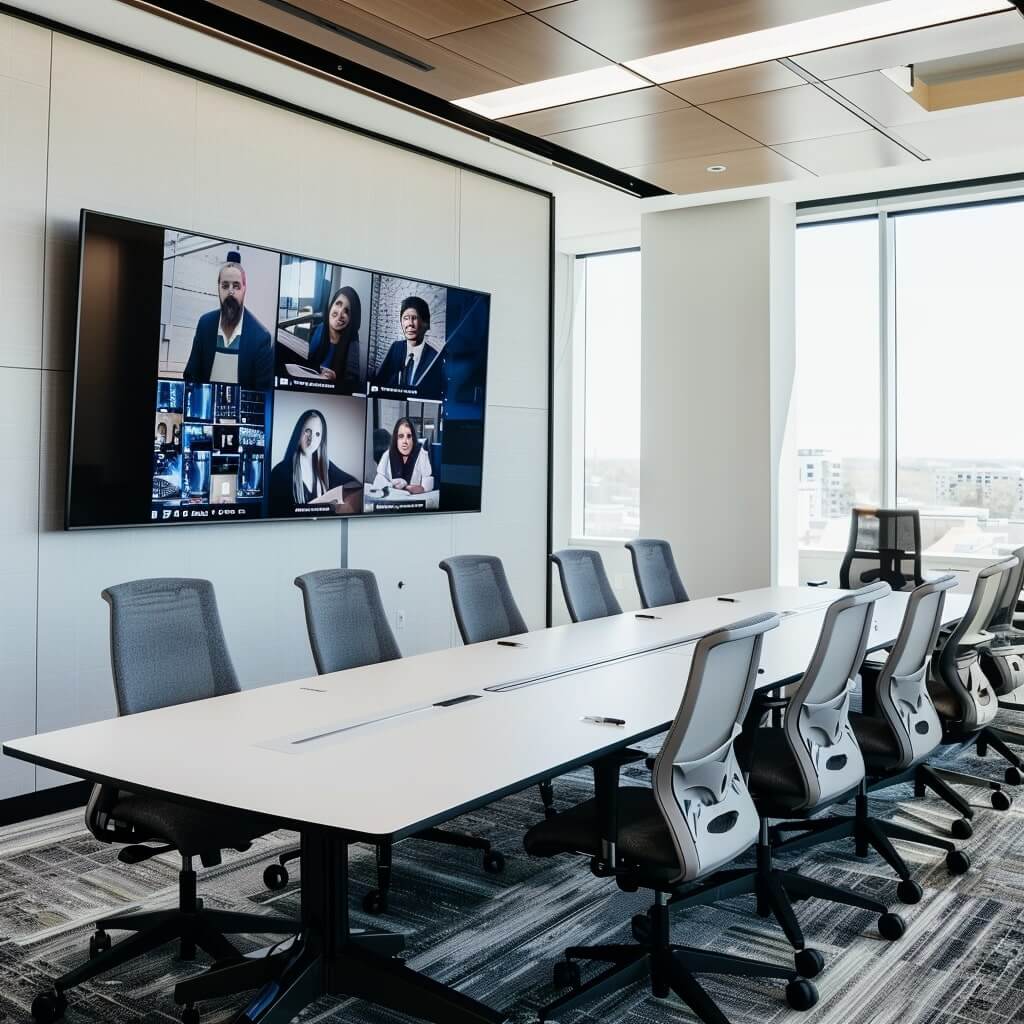
Presentation tools are essential for effective communication during meetings. These include items such as whiteboards, flip charts, and digital displays. Interactive whiteboards and smart screens enhance presentations by allowing real-time annotations and multimedia integration. These tools help facilitate discussions, brainstorming sessions, and decision-making processes. Presentation tools are ideal for enhancing engagement and ensuring that information is clearly conveyed during meetings.
4.4. Conference Room Chairs
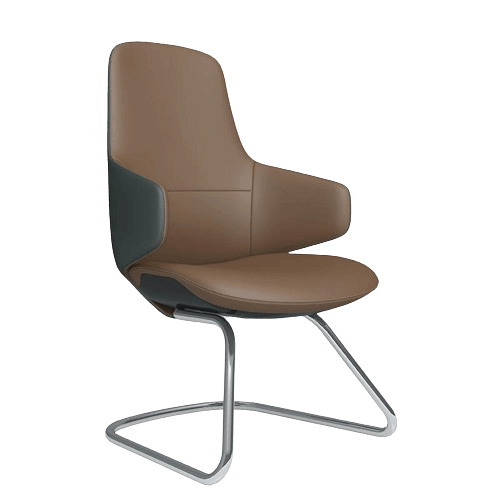
Conference room chairs are designed to provide comfort and support during long meetings. They often feature cushioned seats, ergonomic backrests, and adjustable height and tilt functions. Some conference chairs also include wheels for easy mobility and swivel bases for better interaction. The design and material of conference chairs should complement the overall aesthetic of the room while ensuring that attendees remain comfortable throughout the meeting. Conference room chairs are ideal for creating a professional and comfortable meeting environment.
4.5. Credenzas and Storage Cabinets
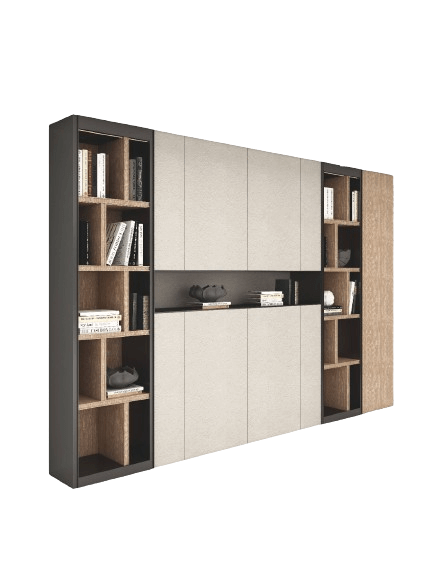
Credenzas and storage cabinets provide essential storage solutions for conference rooms. They offer space for storing meeting supplies, documents, and presentation equipment, helping to keep the room organized and clutter-free. Credenzas often double as serving stations for refreshments, while storage cabinets can be used to secure sensitive materials. These pieces of furniture are ideal for maintaining an efficient and tidy conference room setup.
Choosing the right conference room furniture is crucial for fostering a productive and professional meeting environment. Each type of furniture offers unique benefits tailored to different meeting needs, from versatile modular setups to ergonomic seating. By incorporating appropriate conference room furniture, offices can enhance collaboration, communication, and overall meeting effectiveness.
5. Collaborative and Lounge Areas
Collaborative and lounge areas are essential components of modern office environments, fostering creativity, relaxation, and informal interactions. These spaces are designed to provide comfortable and versatile settings for teamwork, casual meetings, and breaks. Here are the key types of furniture commonly used in collaborative and lounge areas:
5.1. Sofas and Lounge Chairs

Sofas and lounge chairs are central to creating a comfortable and inviting atmosphere in lounge areas. They come in various styles, sizes, and materials, allowing for customization to fit the office’s aesthetic and functional needs. Plush seating with supportive cushions provides a relaxed environment for employees to unwind, brainstorm, or have informal discussions. Sofas and lounge chairs are ideal for break rooms, reception areas, and collaborative spaces where comfort is a priority.
5.2. Collaborative Workstations
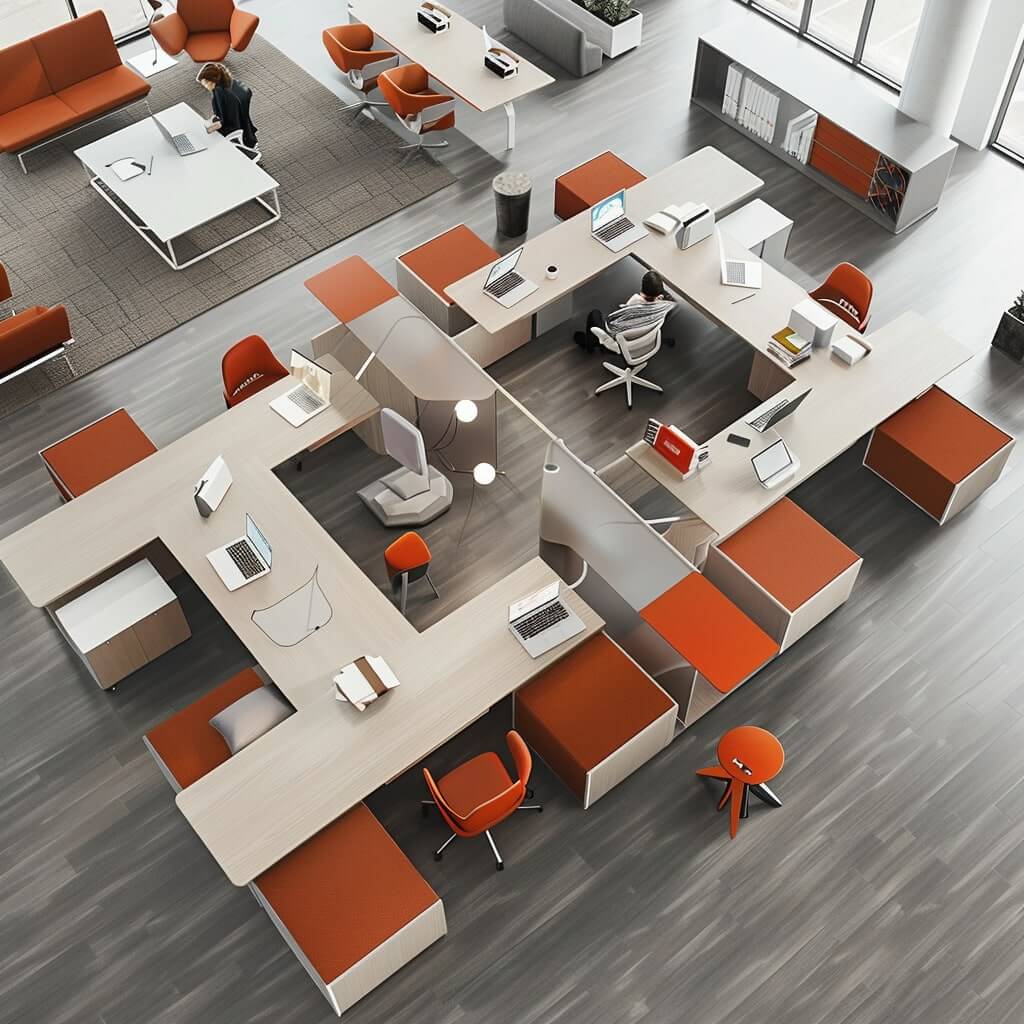
Collaborative workstations are designed to promote teamwork and interaction among employees. These workstations often feature open layouts, shared desks, and integrated technology to facilitate group projects and discussions. Collaborative workstations can include standing desks, modular tables, and comfortable seating arrangements that encourage spontaneous collaboration and idea sharing. They are ideal for open-plan offices and creative environments where teamwork is a key component of productivity.
5.3. Coffee Tables
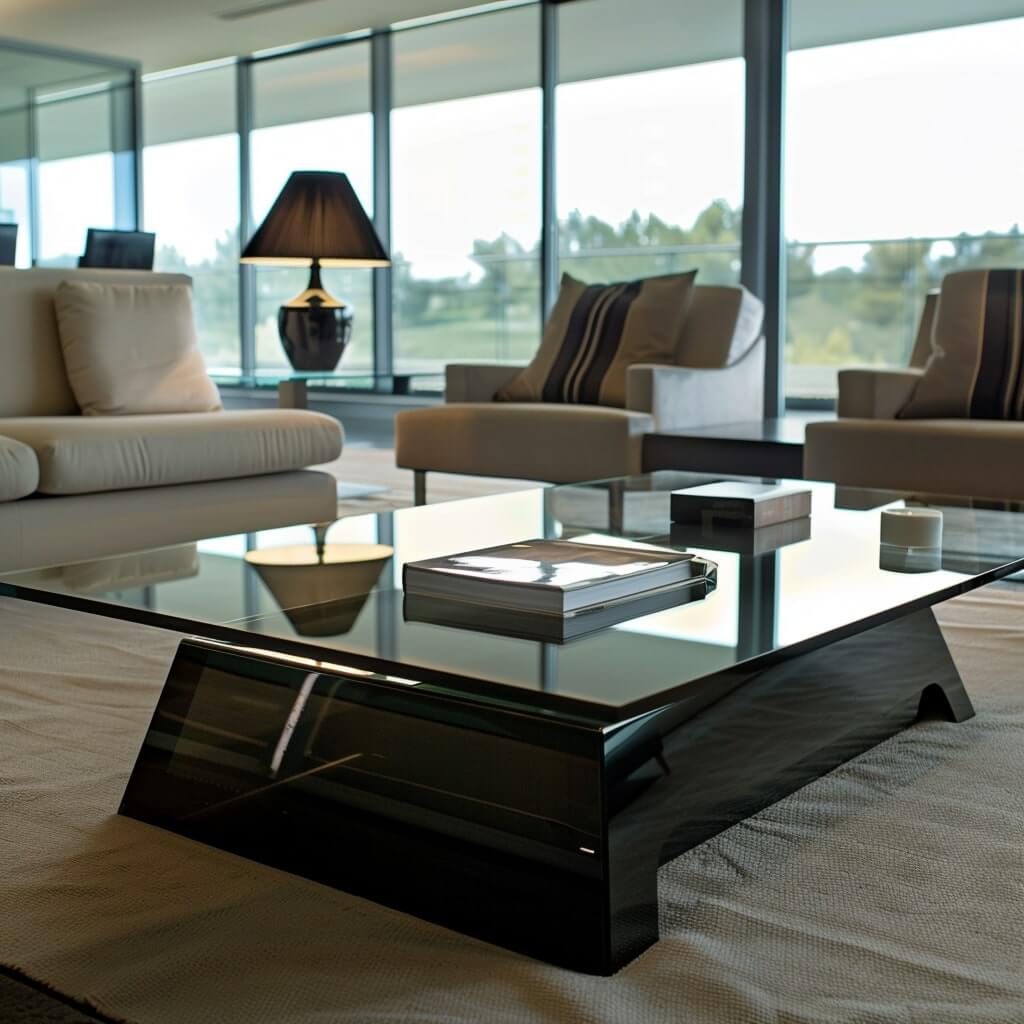
Coffee tables add both functionality and style to lounge areas. They provide a convenient surface for placing beverages, reading materials, and decorative items. Coffee tables come in various shapes, sizes, and materials, from sleek glass designs to sturdy wooden options, allowing them to complement the overall decor of the lounge space. These tables are ideal for creating a relaxed and functional area where employees can gather for casual conversations and breaks.
5.4. Bean Bags and Poufs

Bean bags and poufs offer a fun and informal seating option for lounge areas. They are highly versatile, easy to move, and provide a cozy spot for relaxation or informal meetings. Available in various colors, sizes, and fabrics, bean bags and poufs can add a playful and modern touch to the office decor. They are ideal for creative workspaces, break rooms, and collaborative areas where a laid-back atmosphere is encouraged.
By incorporating the right mix of furniture in collaborative and lounge areas, offices can create spaces that balance comfort, functionality, and aesthetic appeal. These areas not only enhance employee well-being and satisfaction but also promote creativity, collaboration, and effective informal communication.
6. Specialized Office Furniture
Specialized office furniture is designed to meet specific needs and enhance the functionality of the workplace. These pieces cater to particular tasks, ergonomic requirements, and privacy concerns, providing tailored solutions that improve productivity and comfort. Here are the key types of specialized office furniture commonly used in modern offices:
6.1. Height-Adjustable Workstations
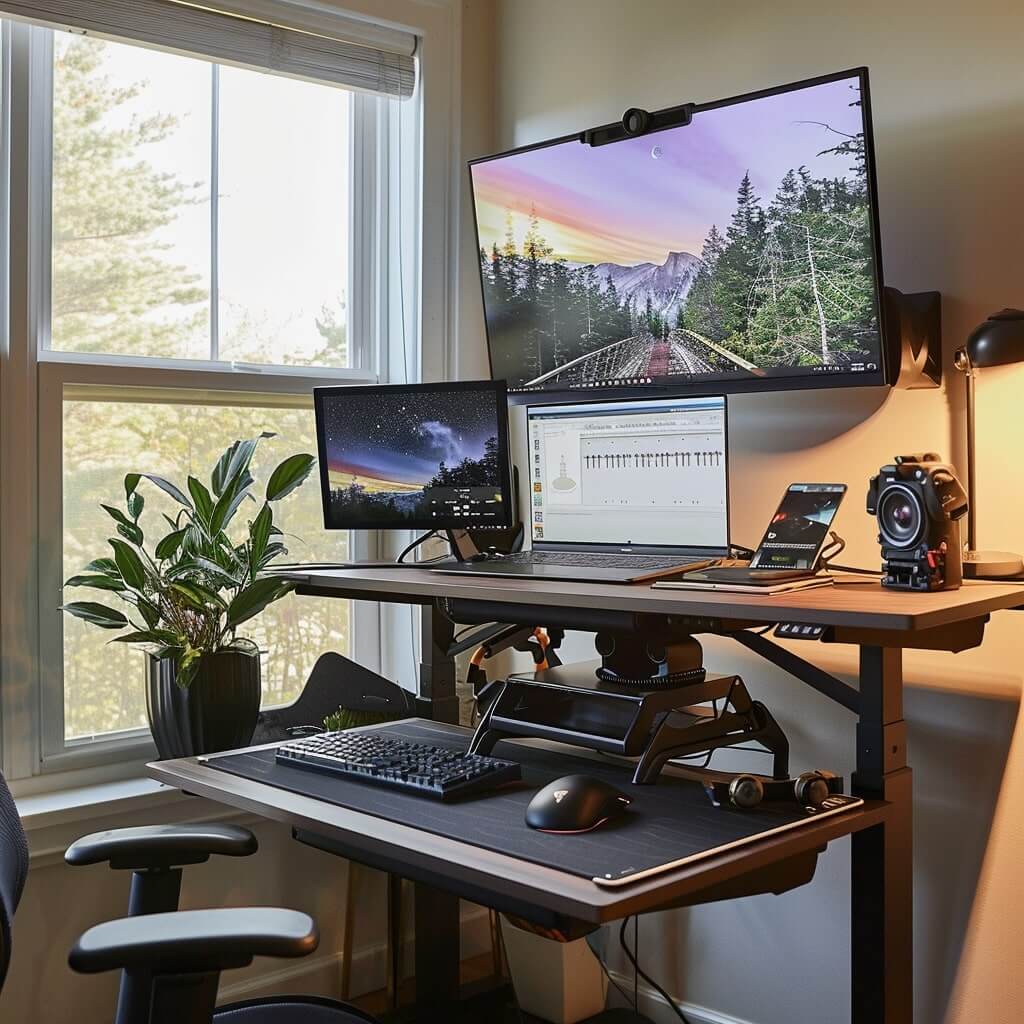
Height-adjustable workstations, also known as sit-stand desks, offer the flexibility to switch between sitting and standing positions throughout the day. This adaptability helps reduce the health risks associated with prolonged sitting, such as back pain and cardiovascular issues. Height-adjustable workstations can be manually or electrically operated, allowing for smooth and easy transitions. They are ideal for creating ergonomic and health-conscious work environments, accommodating various user preferences and promoting active work habits.
6.2. Privacy Pods and Booths

Privacy pods and booths provide quiet, enclosed spaces within open-plan offices, offering a retreat for focused work, confidential calls, or small meetings. These pods and booths are designed with sound-absorbing materials to reduce noise and ensure privacy. Available in various sizes and configurations, from single-person pods to multi-person booths, they cater to different privacy needs. Privacy pods and booths are ideal for creating quiet zones in bustling office environments, enhancing concentration and reducing distractions.
6.3. Computer Workstations
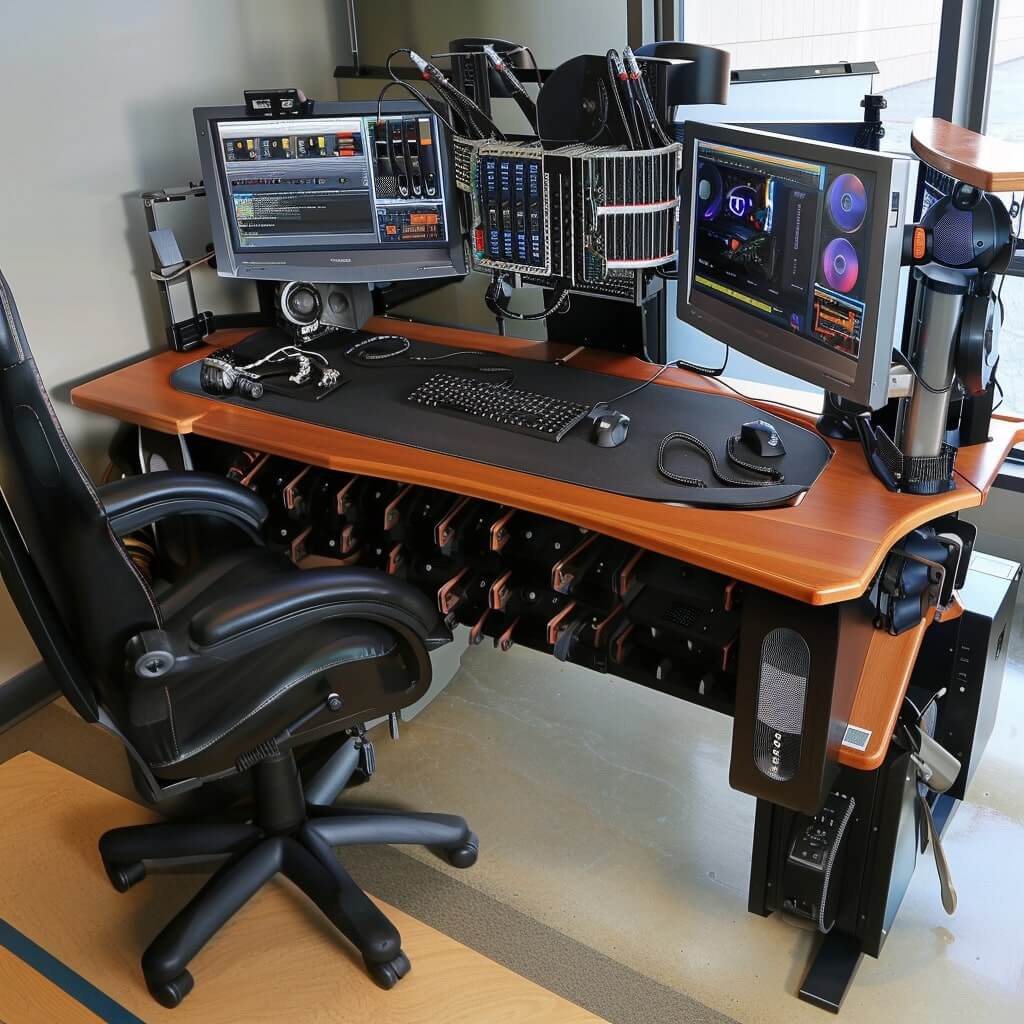
Computer workstations are specialized desks designed to accommodate computers and related equipment efficiently. They often feature cable management systems, built-in storage for peripherals, and ergonomic features like adjustable monitor stands and keyboard trays. Computer workstations are ideal for IT departments, graphic designers, and other tech-heavy roles that require organized and functional setups for optimal performance.
6.4. Drafting Tables
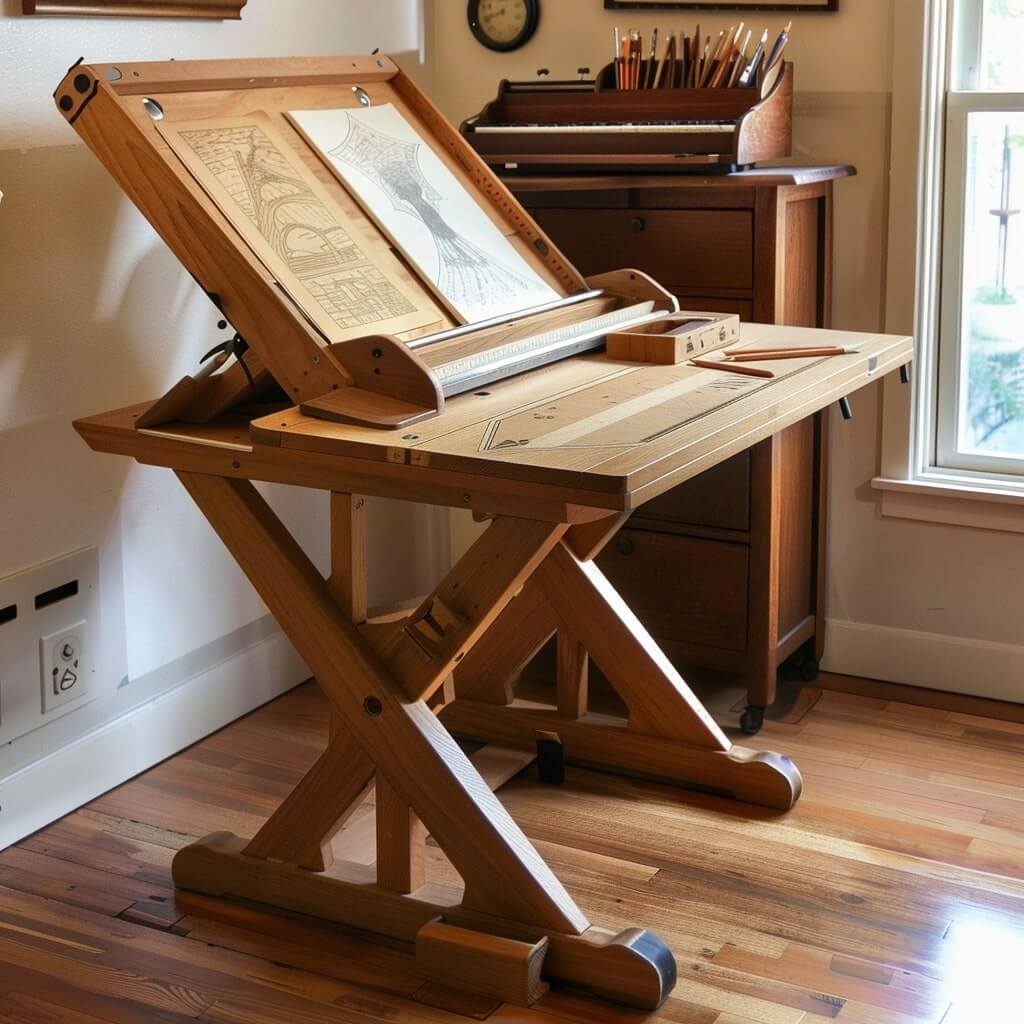
Drafting tables are specifically designed for tasks that require precise drawing and drafting, such as architecture, engineering, and graphic design. These tables typically have adjustable surfaces that can be tilted to various angles, providing a comfortable working position. Drafting tables often include features like built-in rulers, storage drawers, and parallel bars to enhance functionality. They are ideal for professionals who need a dedicated space for detailed and technical work.
6.5. Standing Meeting Tables
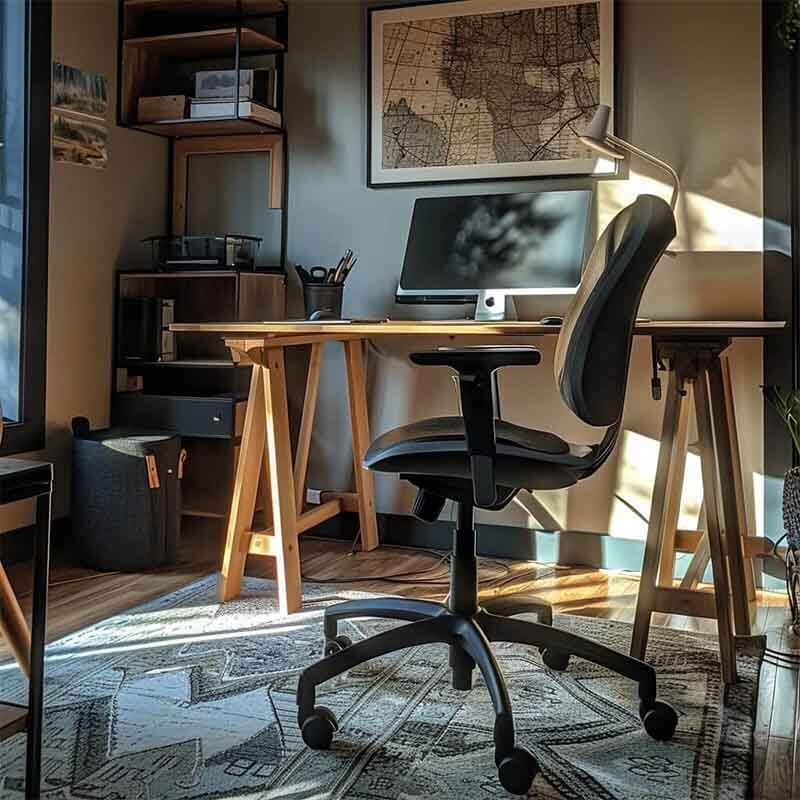
Standing meeting tables are designed to facilitate quick, dynamic meetings and encourage active participation. These tables are typically taller than standard conference tables, allowing participants to stand during discussions. This standing posture can lead to more efficient meetings by reducing the tendency to settle into long, drawn-out sessions. Standing meeting tables are ideal for agile work environments that prioritize swift decision-making and collaborative brainstorming.
6.6. Activity-Based Workstations
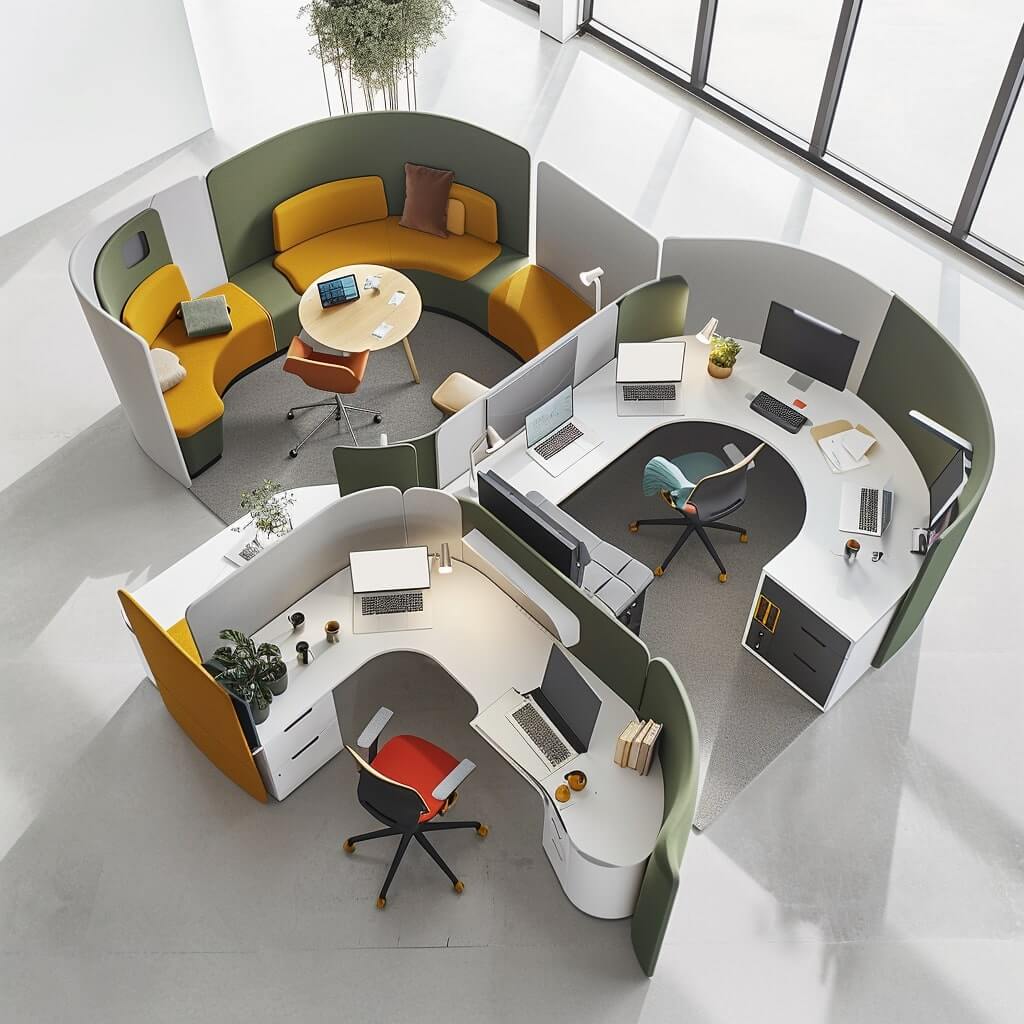
Activity-based workstations are designed to support various work activities and tasks within a single workspace. These modular setups can include different zones for focused work, collaboration, relaxation, and even physical activity. By providing a range of functional areas within one workstation, these setups promote flexibility and adaptability. Activity-based workstations are ideal for dynamic work environments that require versatile solutions to support diverse activities throughout the day.
7. Training Tables
Training tables are versatile pieces of furniture designed for educational sessions, workshops, and team meetings. They are typically lightweight and portable, allowing for easy reconfiguration and storage, which makes them ideal for offices that need flexible and multi-purpose spaces. Here are the key types of training tables that cater to various needs and preferences in the office environment:
7.1. Foldable Training Tables
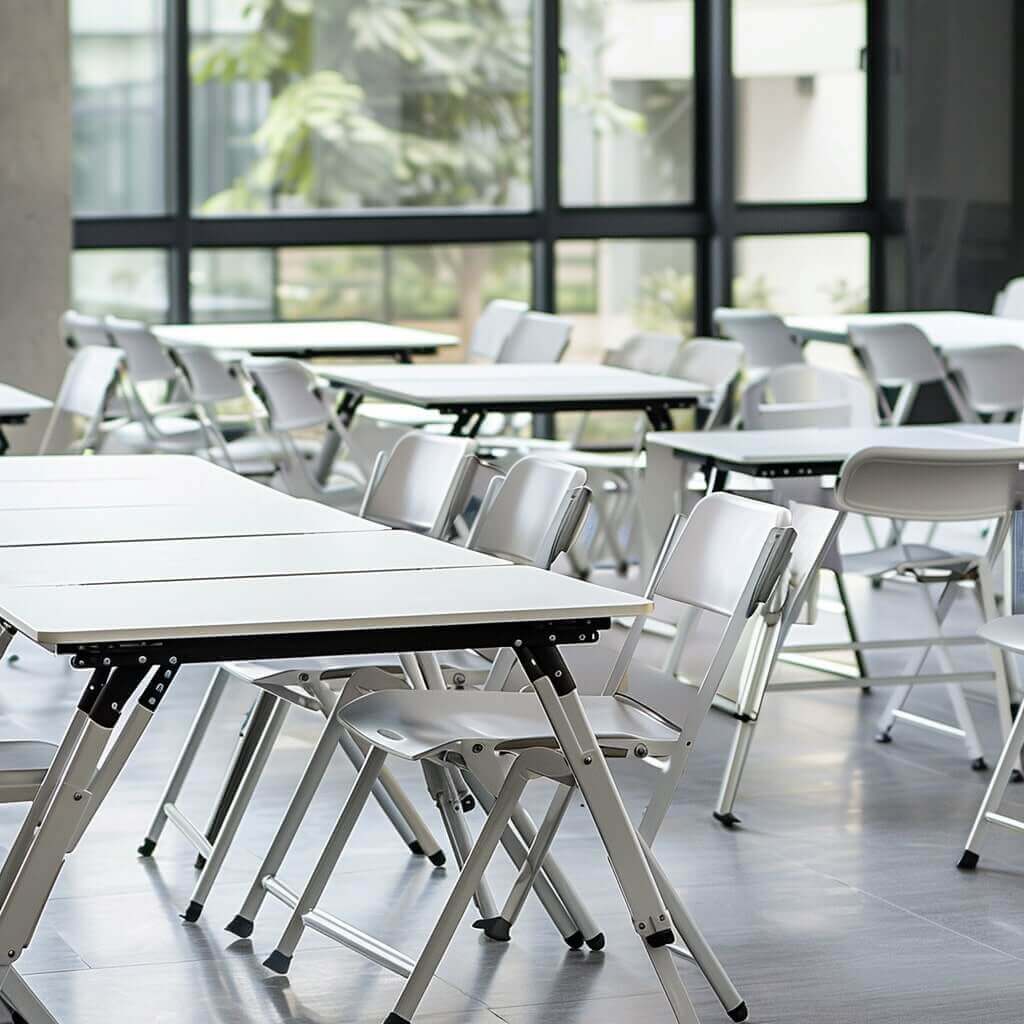
Foldable training tables are designed for convenience and space-saving. They can be easily folded and stored when not in use, making them perfect for offices with limited space or those that frequently host training sessions. These tables typically feature sturdy frames and durable surfaces, ensuring they can withstand regular use and frequent folding. Foldable training tables are ideal for creating temporary training setups or multipurpose rooms.
7.2. Nesting Training Tables
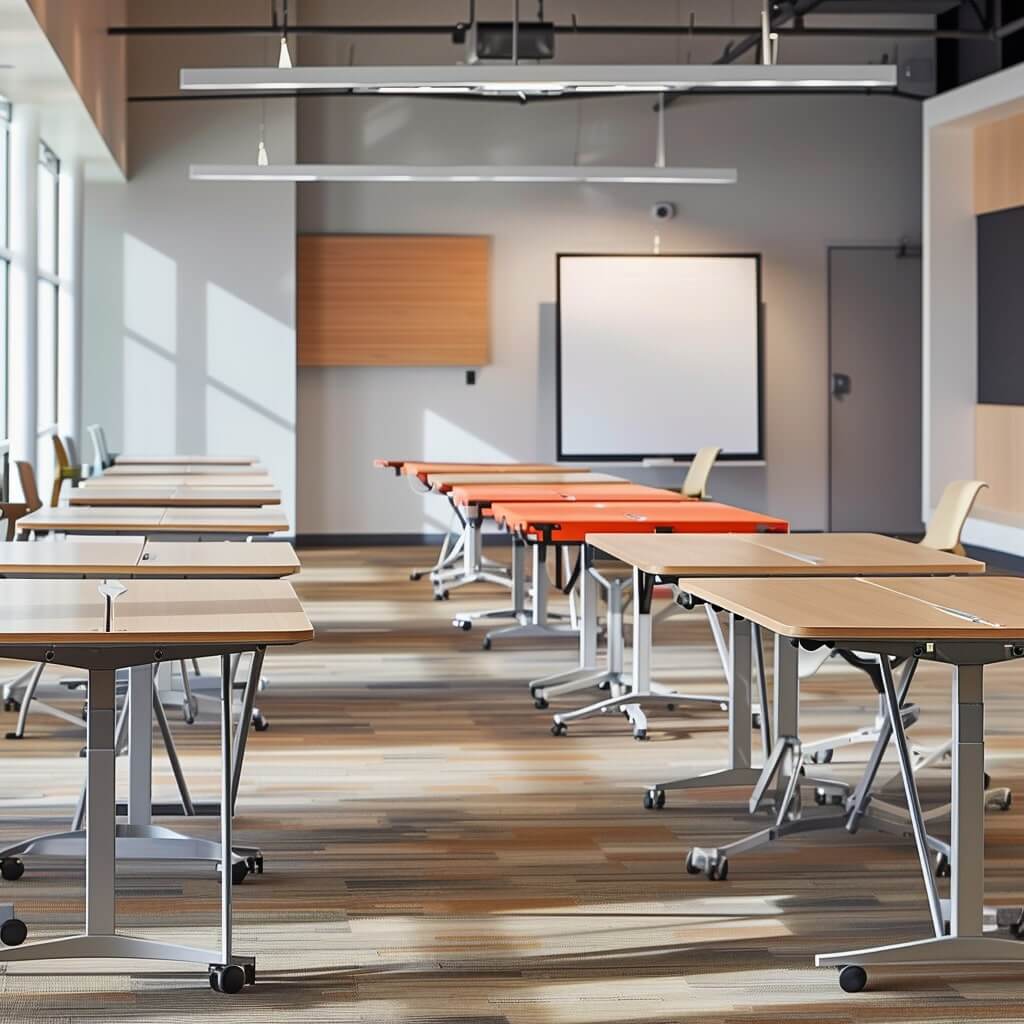
Nesting training tables are designed to stack together when not in use, saving space and making them easy to store. They often come with casters for mobility and can be quickly rearranged to suit different training formats. These tables are perfect for dynamic work environments that require frequent layout changes and space optimization. Nesting training tables are ideal for offices that need flexible and efficient furniture solutions for training and collaboration.
7.3. Adjustable Training Tables

Adjustable training tables offer flexibility in height and configuration, catering to different user needs and ergonomic requirements. They can be raised or lowered to accommodate standing or sitting positions, making them versatile for various training activities. These tables are often used in environments where comfort and adaptability are crucial, such as training centers and collaborative workspaces. Adjustable training tables are ideal for creating inclusive and ergonomic training setups.
7.4. Modular Training Tables
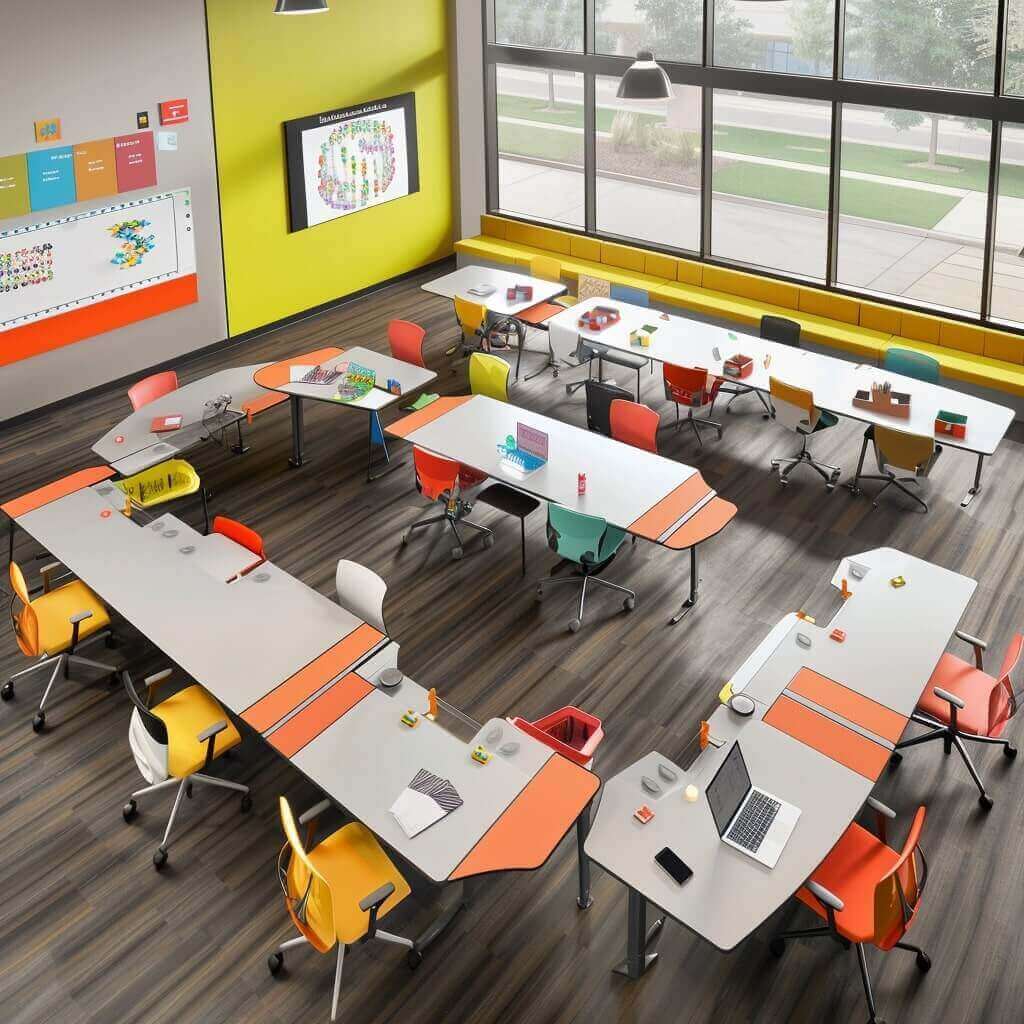
Modular training tables are designed for customization and adaptability, allowing multiple units to be connected or separated to create various configurations. They are perfect for training rooms that need to accommodate different group sizes and activities. These tables typically feature interlocking mechanisms or connectors, providing stability and ease of use. Modular training tables are ideal for creating scalable training environments that can be quickly reconfigured as needed.
7.5. Mobile Training Tables
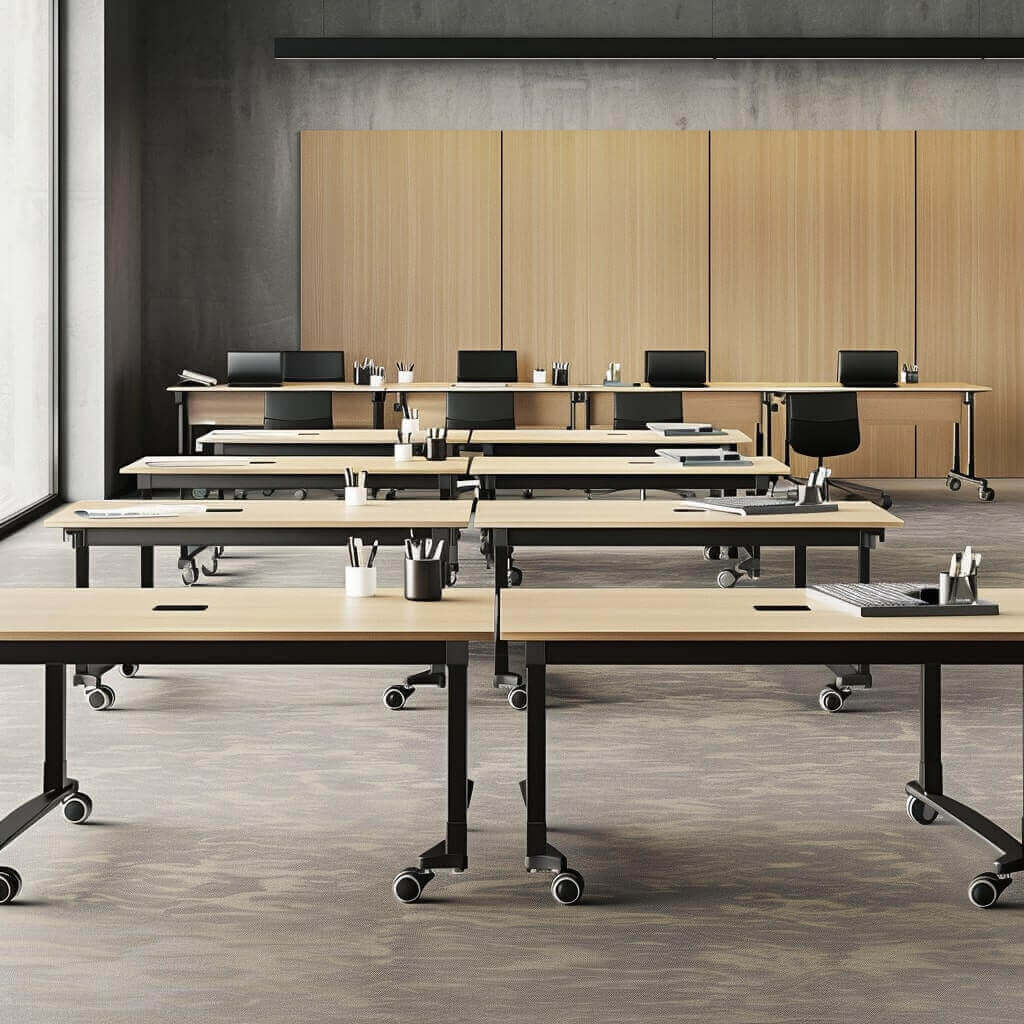
Mobile training tables come equipped with wheels or casters, allowing them to be easily moved and repositioned. This mobility makes them suitable for dynamic training environments where quick setup and breakdown are required. These tables are often used in settings that require frequent reconfiguration, such as conference rooms, classrooms, and collaborative spaces. Mobile training tables are ideal for offices that value flexibility and ease of movement in their furniture.
Choosing the right training table is essential for creating a functional and flexible training environment. Each type of table offers unique benefits and features that cater to different training needs and preferences, from space-saving solutions to adjustable and modular designs. By selecting the appropriate training tables, offices can enhance the efficiency and adaptability of their training spaces, ensuring a productive and engaging learning experience.
8. Standing Desks
Standing desks, also known as height-adjustable desks, are designed to promote a healthier work lifestyle by allowing users to alternate between sitting and standing positions. They are an essential addition to modern offices that prioritize employee well-being and flexibility. Here are the key types of standing desks that cater to various needs and preferences:
8.1. Manual Standing Desks

Manual standing desks are adjusted using hand cranks or knobs, allowing users to change the desk height to their preferred level. These desks are typically more affordable than their electric counterparts and are suitable for users who do not require frequent adjustments. Manual standing desks are ideal for budget-conscious offices looking to incorporate ergonomic furniture without sacrificing functionality.
8.2. Electric Standing Desks

Electric standing desks feature motorized height adjustment mechanisms, enabling users to change the desk height with the push of a button. These desks offer greater convenience and precision, making them suitable for users who need to frequently adjust their working position. Electric standing desks are ideal for offices that value ease of use and encourage dynamic work habits among their employees.
8.3. Convertible Standing Desks
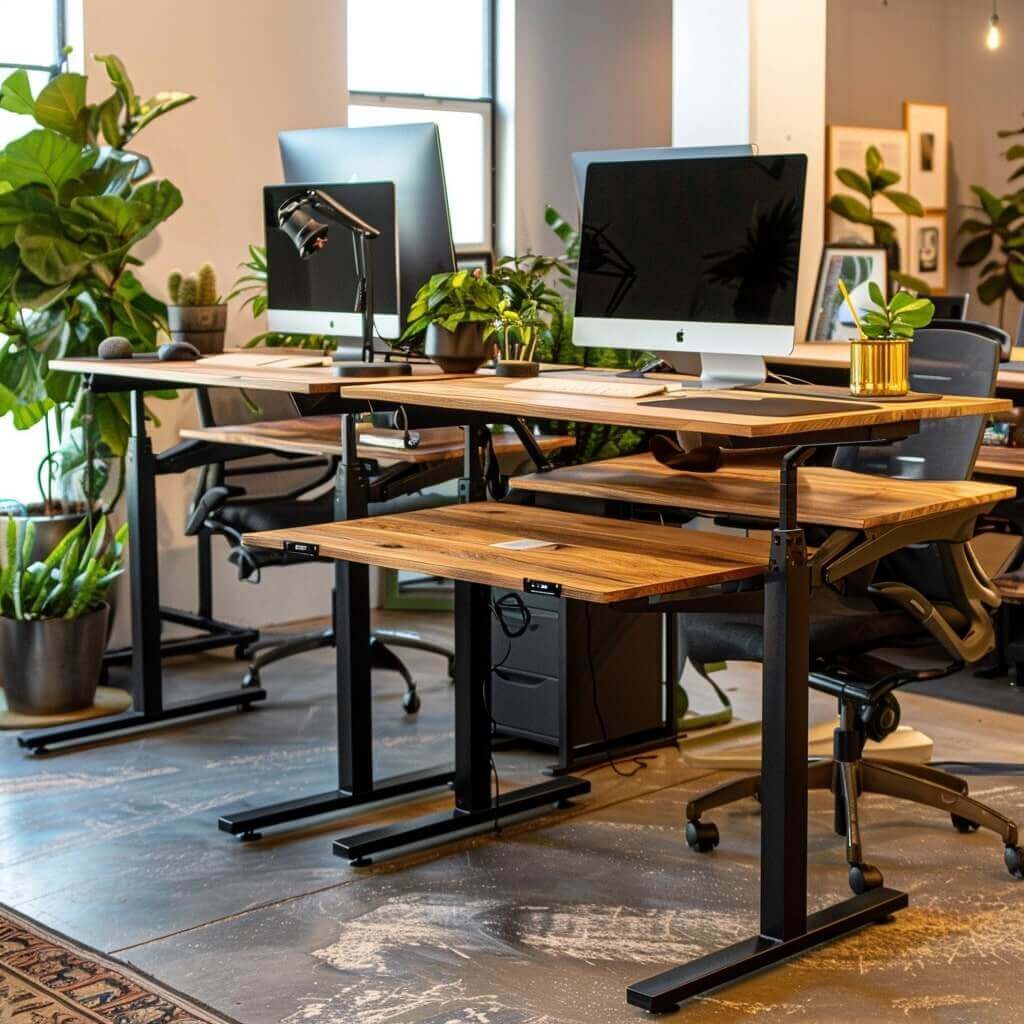
Convertible standing desks, also known as sit-stand desk converters, are placed on top of existing desks to provide height-adjustable work surfaces. They allow users to convert a standard desk into a standing desk without the need for a complete replacement. These converters are available in various styles and sizes, offering flexibility and convenience for users who want to try standing desks without a significant investment. Convertible standing desks are ideal for offices that want to offer standing options with minimal disruption.
8.4. L-Shaped Standing Desks
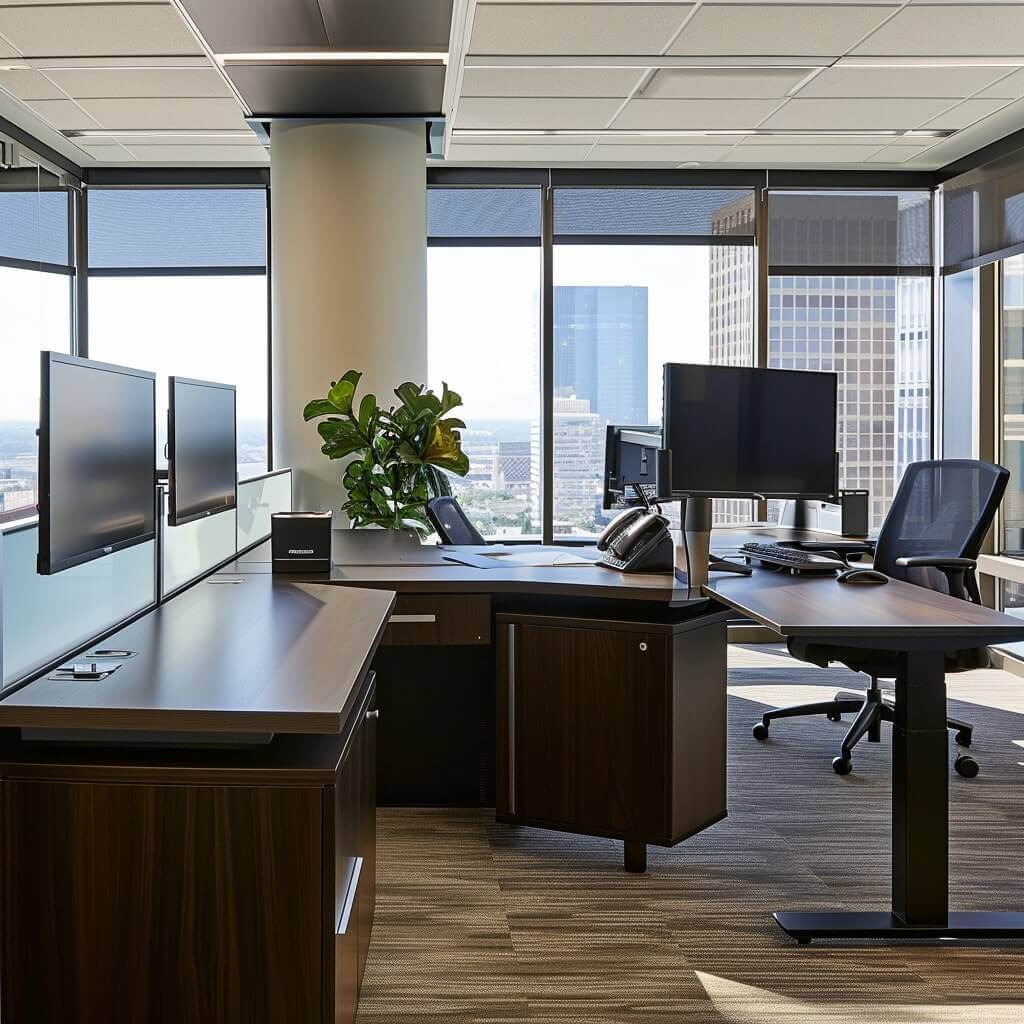
L-shaped standing desks provide an expansive work surface with the added benefit of height adjustability. They are perfect for users who need a large workspace for multiple monitors or work tasks while still enjoying the ergonomic benefits of a standing desk. These desks are often used in executive offices or home offices where space and functionality are crucial. L-shaped standing desks are ideal for professionals who require a versatile and spacious ergonomic workspace.
8.5. Portable Standing Desks

Portable standing desks are lightweight and designed for mobility, allowing users to create a standing workspace anywhere. These desks are ideal for hot-desking environments, home offices, or users who need to move between different workstations. Portable standing desks are available in various sizes and styles, providing flexibility for different work setups. They are ideal for offices that need flexible and mobile furniture solutions for their dynamic work environments.
Choosing the right standing desk is essential for enhancing workplace ergonomics and promoting a healthy work routine. Each type of standing desk offers unique features and benefits, from manual and electric adjustments to portable and convertible designs. By selecting the appropriate standing desks, offices can create a more dynamic and health-conscious work environment, boosting employee productivity and well-being.
9. Reception Area Furniture
Reception area furniture is critical in creating a welcoming and professional first impression for visitors and clients. It includes a variety of furnishings that not only provide comfort but also convey the company’s brand and values. Here are the key types of reception area furniture that cater to various needs and preferences:
9.1. Reception Desks
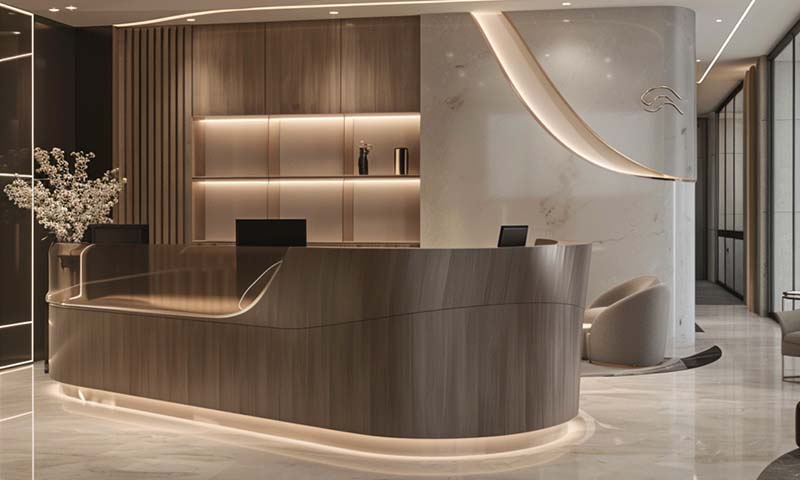
Reception desks are the focal point of the reception area, designed to provide a professional and welcoming space for greeting visitors. These desks typically feature ample surface space for computers, phones, and visitor sign-in materials, along with built-in storage for organizing paperwork and supplies. Reception desks are available in various styles, from modern minimalist designs to more traditional options, reflecting the company’s aesthetic and functional requirements.
9.2. Reception Seating

Reception seating includes chairs, sofas, and benches that provide comfortable waiting areas for visitors. These furnishings should offer both style and comfort, making a positive impression on clients and guests. Reception seating comes in various designs, including cushioned chairs, plush sofas, and modular seating options, allowing for customization to match the office decor. Reception seating is essential for creating a comfortable and inviting reception area.
9.3. Coffee Tables
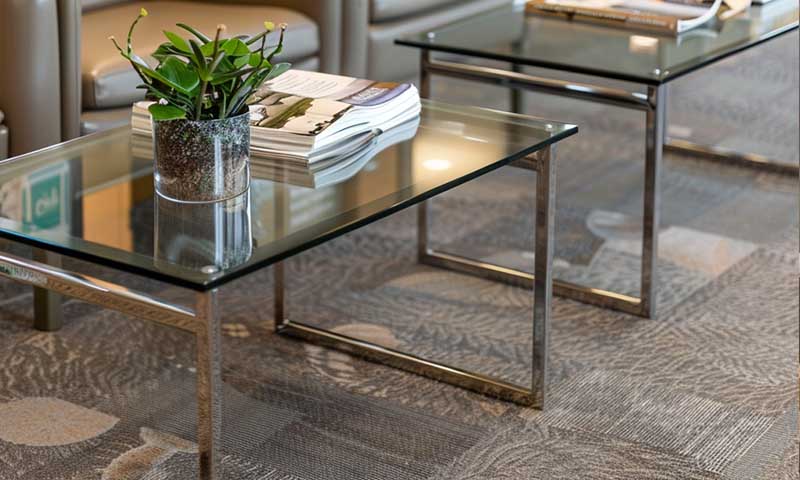
Coffee tables are an integral part of reception areas, providing a convenient surface for visitors to place beverages, magazines, or personal items. They are available in various shapes and sizes, from small round tables to larger rectangular ones, and come in materials like wood, glass, and metal. Coffee tables help enhance the functionality and aesthetic appeal of the reception area, offering a touch of hospitality and comfort.
9.4. Reception Storage
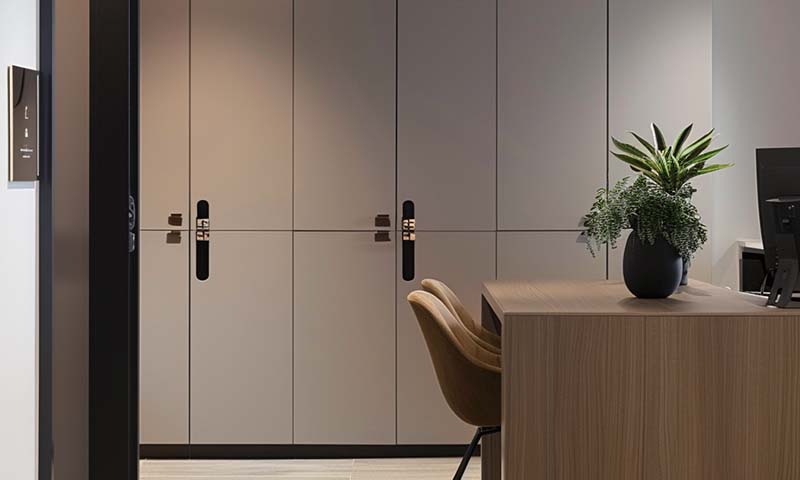
Reception storage solutions, such as cabinets and shelving units, help keep the reception area organized and clutter-free. These storage options provide space for storing visitor materials, office supplies, and personal belongings of reception staff. Reception storage units come in various styles and sizes, from sleek wall-mounted cabinets to more substantial floor-standing options, ensuring a tidy and efficient reception area. They are essential for maintaining a professional and organized reception environment.
9.5. Decorative Elements
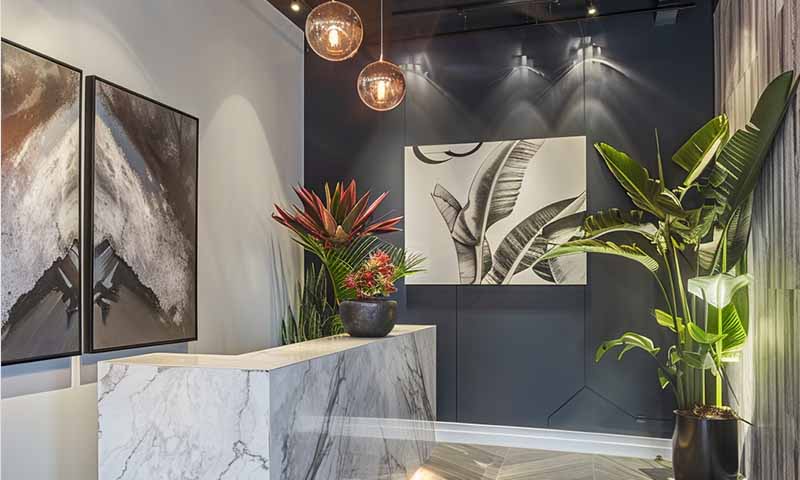
Decorative elements, such as artwork, plants, and lighting, play a crucial role in enhancing the ambiance of the reception area. These elements help create a welcoming and aesthetically pleasing environment that reflects the company’s brand and values. Decorative items should be carefully chosen to complement the overall decor and create a cohesive look. Decorative elements are ideal for adding personality and warmth to the reception area, making it more inviting for visitors.
Choosing the right reception area furniture is essential for creating a positive and lasting first impression. Each type of furniture contributes to the overall functionality and aesthetics of the reception space, ensuring that visitors feel welcomed and comfortable. By selecting the appropriate reception area furniture, offices can enhance their professional image and provide a warm and inviting environment for clients and guests.
10. Conference Tables
Conference tables are crucial for facilitating effective meetings and collaborative work in office environments. They serve as the centerpiece of conference rooms, providing a central platform for discussions and presentations. Here are the key types of conference tables that cater to various needs and preferences:
10.1. Rectangular Conference Tables
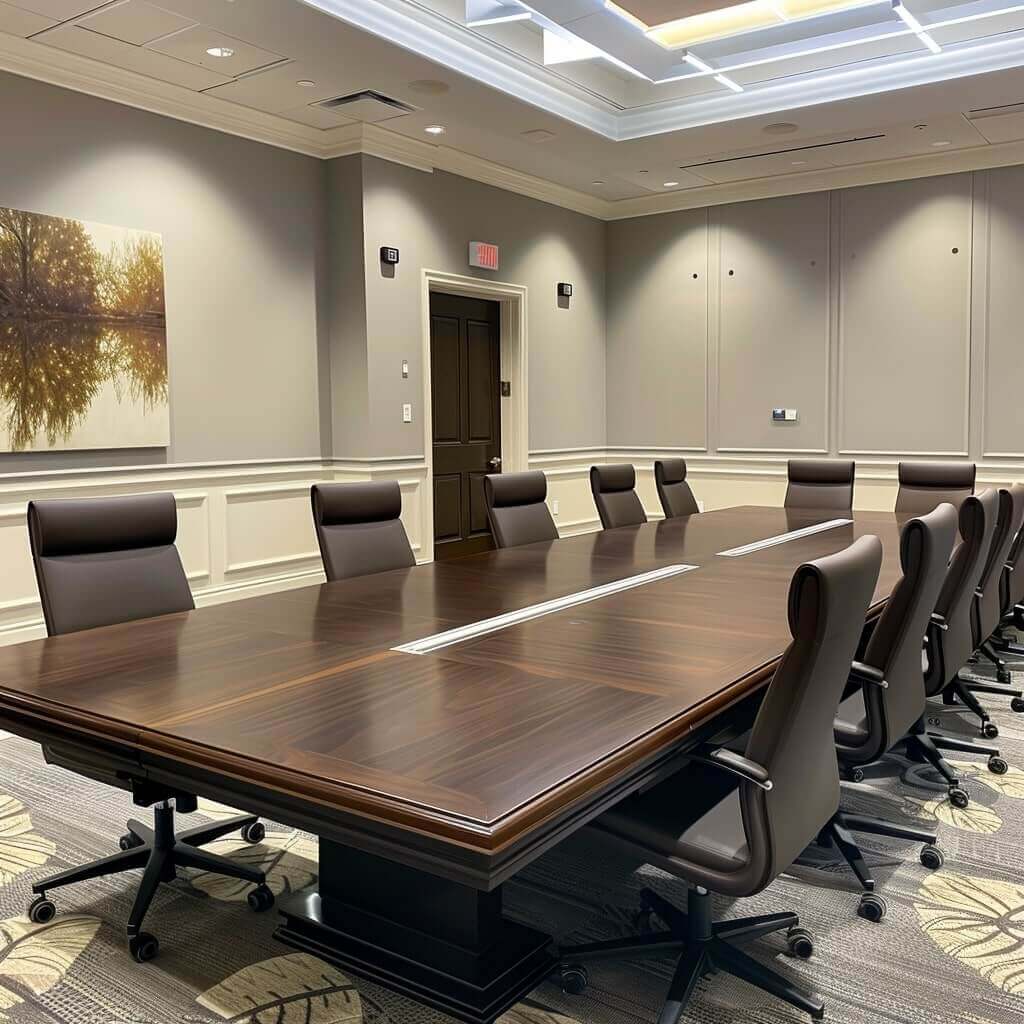
Rectangular conference tables are the most common type, offering a straightforward design that fits well in various room layouts. They provide ample space for multiple participants, making them ideal for large meetings and presentations. These tables are available in various sizes and materials, including wood, glass, and metal, and often feature integrated cable management systems to keep the workspace organized. Rectangular conference tables are perfect for formal meetings and structured discussions.
10.2. Round Conference Tables
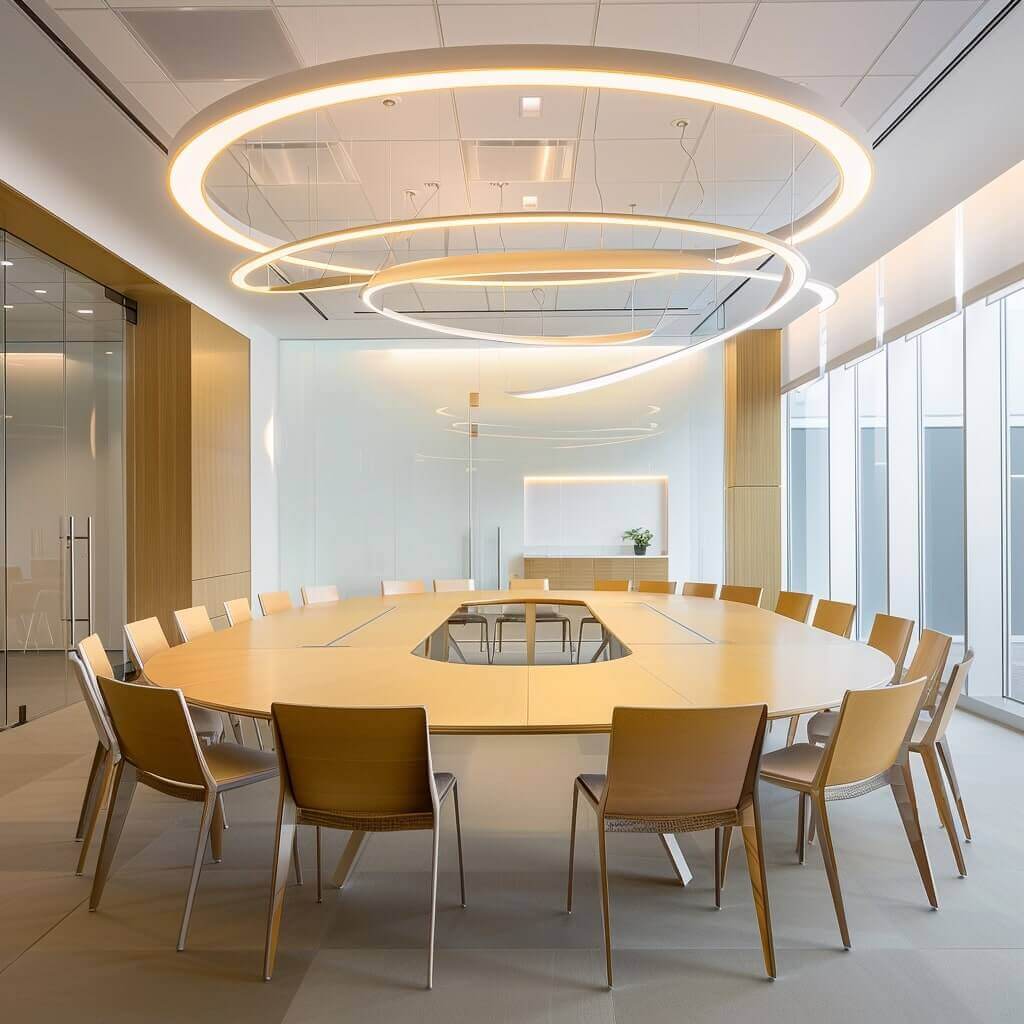
Round conference tables are designed to foster open communication and collaboration by allowing participants to face each other directly. These tables are ideal for smaller meetings where a more intimate and egalitarian setup is desired. They promote a sense of inclusivity and equal participation, making them suitable for brainstorming sessions and informal discussions. Round conference tables come in various sizes and finishes, from compact models for tight spaces to larger ones for more substantial groups. They are ideal for creating a collaborative and engaging meeting environment.
10.3. Oval Conference Tables
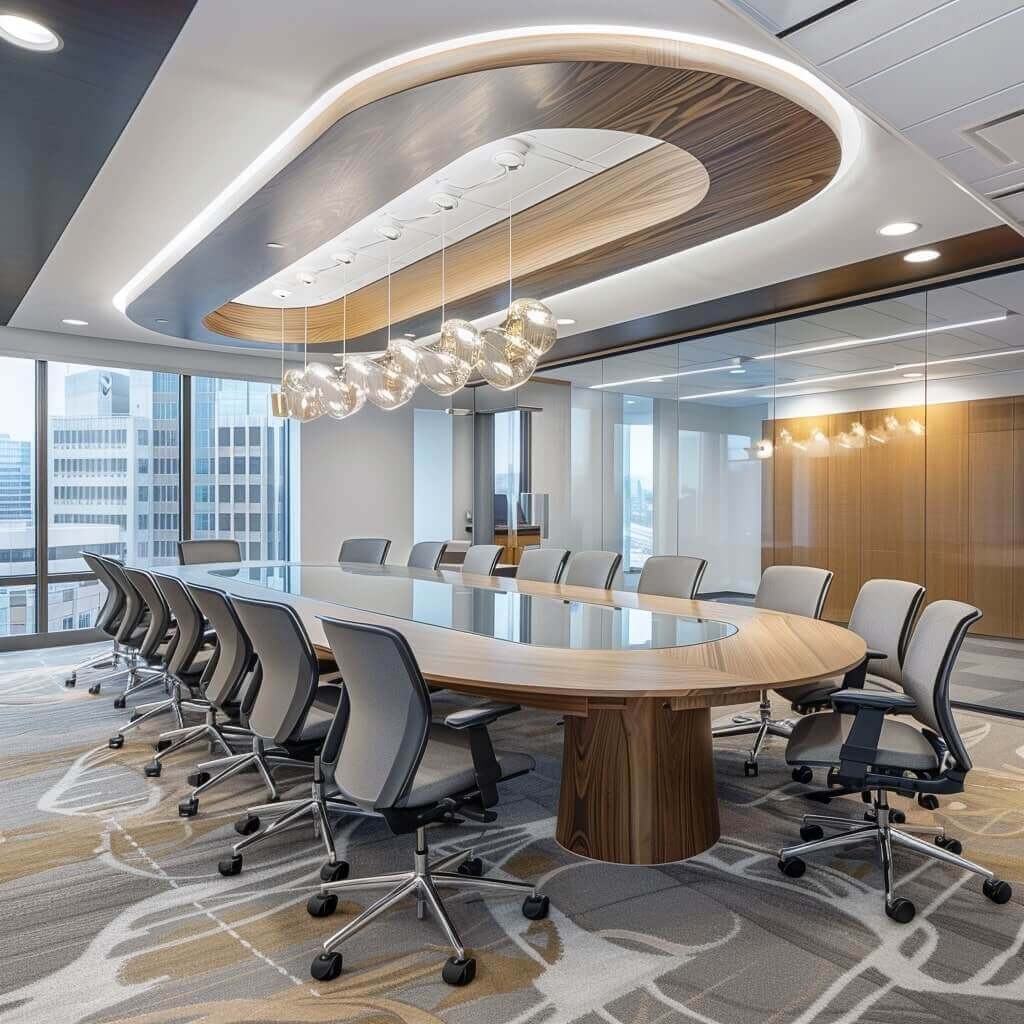
Oval conference tables combine the benefits of rectangular and round tables, offering a spacious yet inclusive setup. The elongated shape provides ample seating while promoting visibility and interaction among participants. These tables are perfect for medium to large meetings, as they can accommodate more people than round tables without sacrificing the benefits of a collaborative layout. Oval conference tables often feature built-in technology solutions such as power outlets and data ports, making them ideal for high-tech conference rooms.
10.4. Boat-Shaped Conference Tables

Boat-shaped conference tables are distinguished by their curved sides, which create a visually appealing and ergonomic design. The slight curvature improves sightlines for all participants, making it easier to maintain eye contact and engage in discussions. These tables are particularly effective in large conference rooms where visibility and interaction are crucial. Boat-shaped conference tables often include advanced features like integrated cable management and multimedia connections, making them ideal for formal presentations and collaborative work sessions.
10.5. Modular Conference Tables

Modular conference tables offer unmatched flexibility, allowing for various configurations to suit different meeting needs. These tables can be connected or separated to create customized setups, from U-shaped and T-shaped arrangements to smaller breakout groups. Modular conference tables are perfect for dynamic work environments where meeting formats frequently change. They often come with foldable or wheeled components for easy reconfiguration and storage, making them ideal for versatile and adaptable office spaces.
Choosing the right conference table is crucial for fostering a productive and collaborative meeting environment. Each type of table offers unique features and benefits, from promoting open communication to providing advanced technological capabilities. By selecting the appropriate conference tables, offices can enhance the functionality and effectiveness of their meeting spaces, ensuring that all participants are comfortable and engaged.
11. Modular Office Furniture
Modular office furniture is designed to offer flexibility and adaptability, allowing components to be reconfigured to meet changing needs in the office environment. This type of furniture is ideal for dynamic workspaces that require versatile solutions. Here are the key types of modular office furniture that cater to various needs and preferences:
11.1. Modular Desks
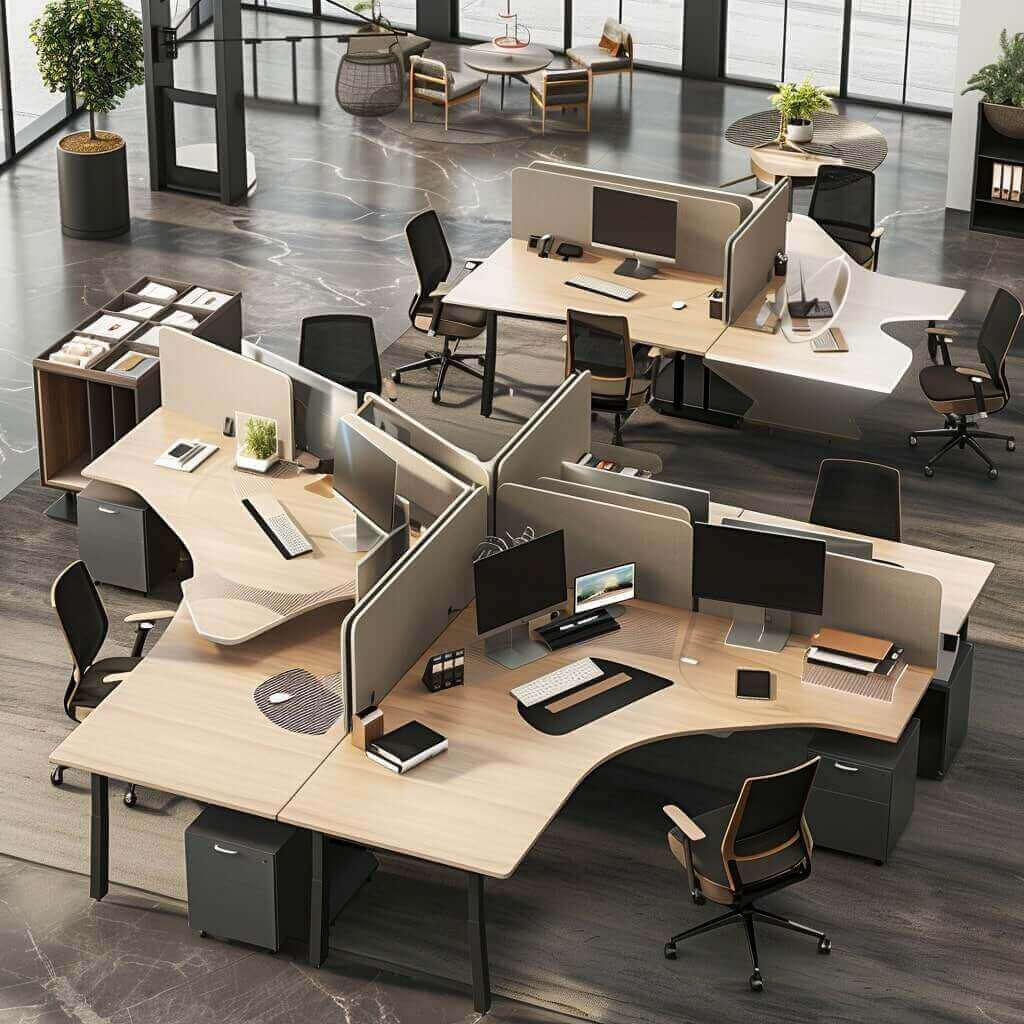
Modular desks are designed to be customizable and reconfigurable, allowing for various layouts and workspace configurations. These desks can be combined to create larger workstations or separated into individual units as needed. They are perfect for open-plan offices where space and layout flexibility are essential. Modular desks often feature integrated cable management and storage options, making them ideal for creating organized and efficient work environments.
11.2. Modular Storage Units

Modular storage units include stackable shelves, cabinets, and drawers that can be arranged in different configurations to meet varying storage needs. These units are versatile and can be easily added or removed to accommodate changes in office requirements. Modular storage solutions are ideal for offices that need to manage space efficiently while maintaining flexibility. They are perfect for creating customized storage systems that evolve with the office’s needs.
11.3. Modular Meeting Tables

Modular meeting tables are designed to be versatile and adaptable, allowing for quick reconfiguration to suit different meeting formats. These tables can be arranged in various shapes, such as U-shaped, L-shaped, or clustered setups, making them suitable for different types of meetings and group sizes. Modular meeting tables are ideal for offices that host a variety of meetings and need to frequently adjust their layout. They offer flexibility and functionality, supporting efficient use of space and resources.
11.4. Modular Seating

Modular seating includes sofas, chairs, and benches that can be reconfigured to create different seating arrangements. These pieces are perfect for collaborative spaces, waiting areas, and lounges, where flexibility in seating is important. Modular seating allows offices to create customized layouts that can be easily changed to accommodate different group sizes and activities. It is ideal for creating comfortable and adaptable seating solutions that enhance the office environment.
11.5. Modular Partitions
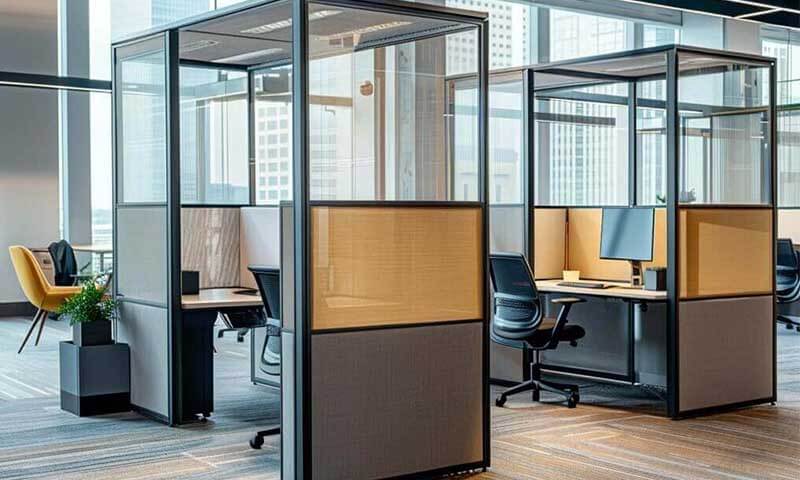
Modular partitions are movable panels that can be used to create temporary walls and dividers within office spaces. They are perfect for open-plan offices that need to create private work areas or meeting spaces on an as-needed basis. Modular partitions are available in various materials and designs, from acoustic panels that reduce noise to glass partitions that provide visual privacy while maintaining an open feel. They are ideal for creating flexible and customizable office layouts that can adapt to changing needs.
Choosing specialized office furniture tailored to specific tasks and needs can significantly enhance the efficiency, comfort, and functionality of a workplace. By incorporating these pieces, offices can create customized environments that cater to the unique requirements of their employees, fostering productivity and well-being.
Conclusion
Selecting the right office furniture is crucial for creating a productive and comfortable workspace. From ergonomic chairs and adjustable desks to efficient storage solutions and versatile conference room furniture, each piece plays a vital role. Collaborative and lounge areas enhance creativity and informal interactions. Investing in functional, comfortable, and stylish office furniture boosts employee satisfaction and productivity while enhancing the professional image of the organization. Tailor your choices to meet the specific needs of your employees and create an environment that fosters productivity and innovation.
